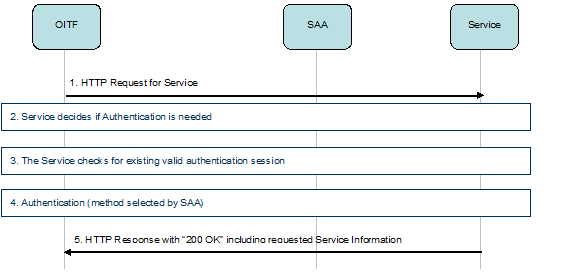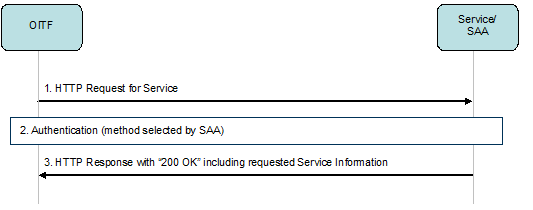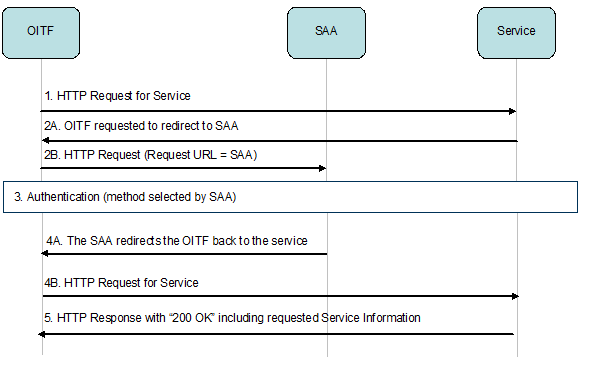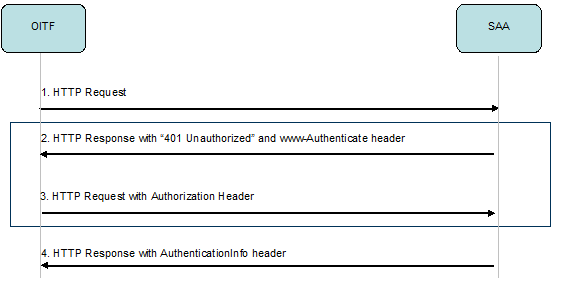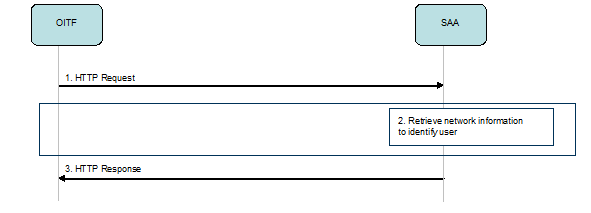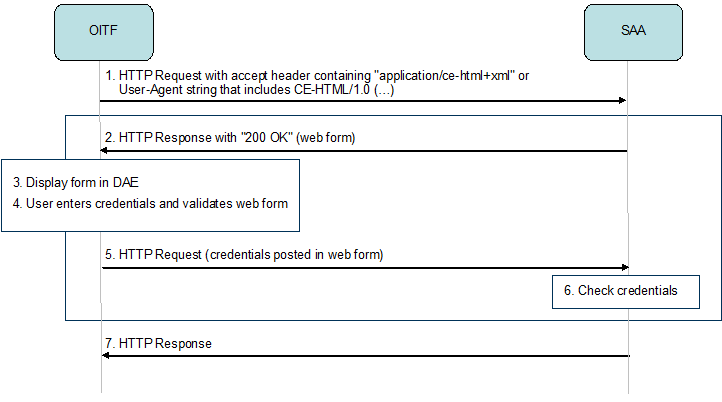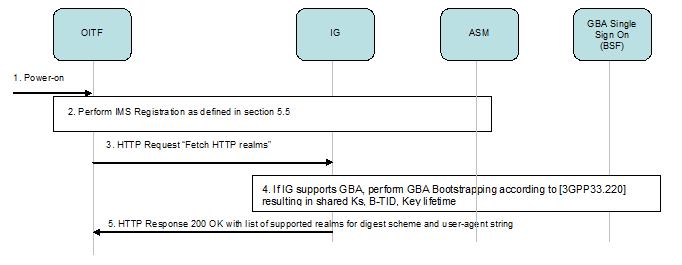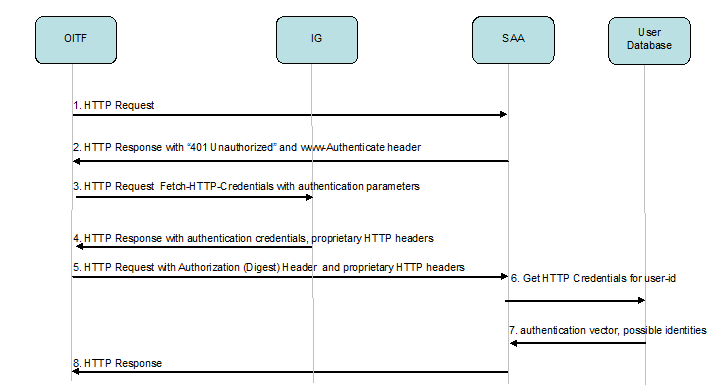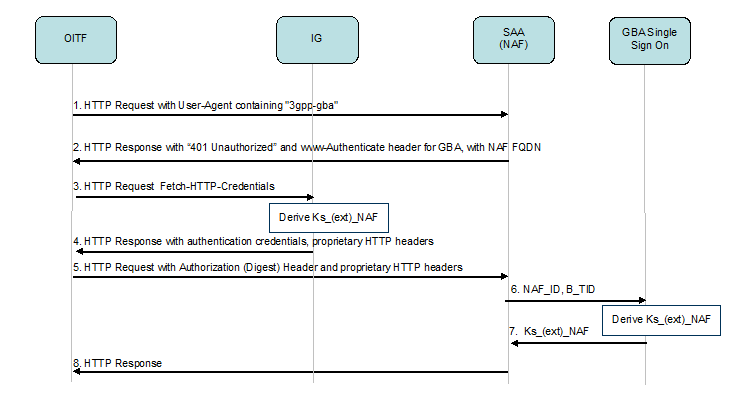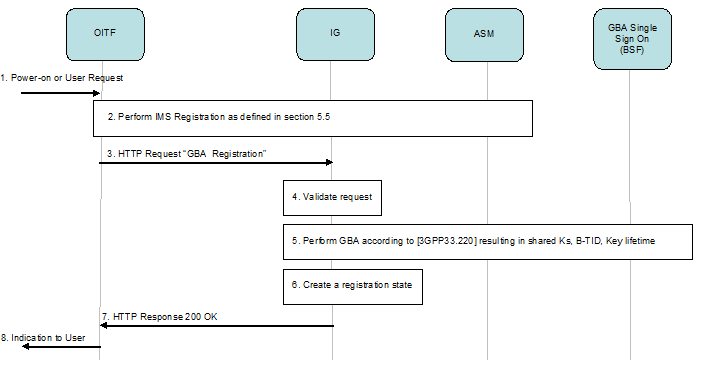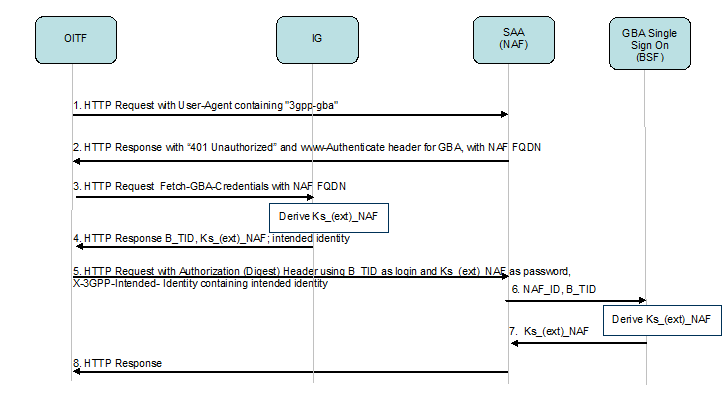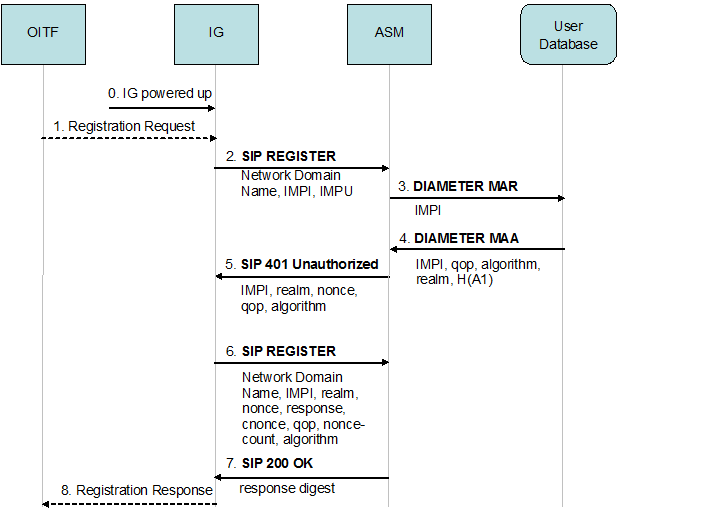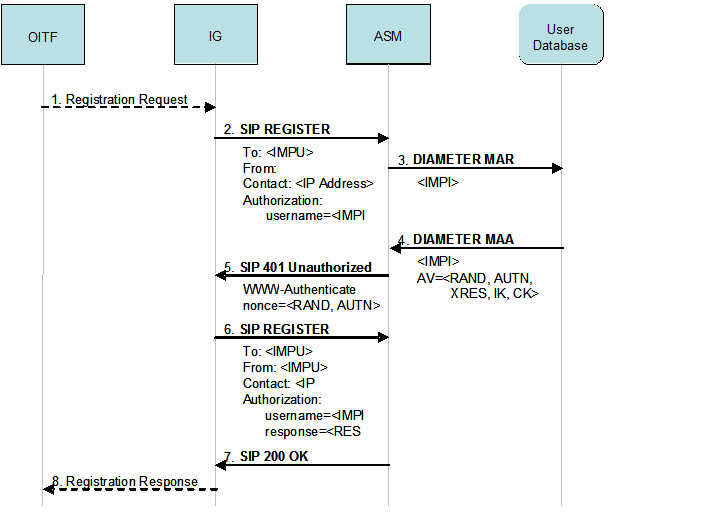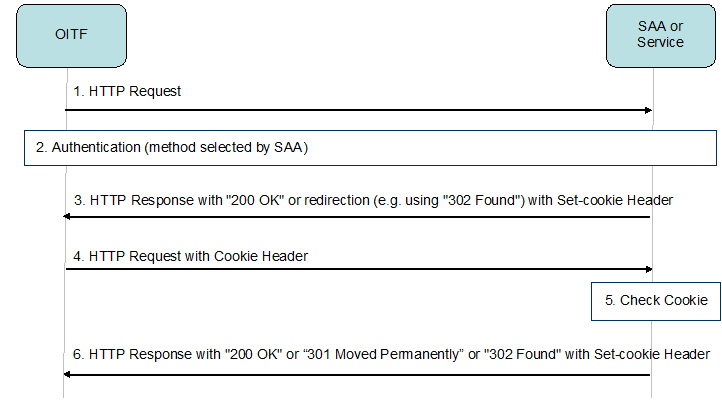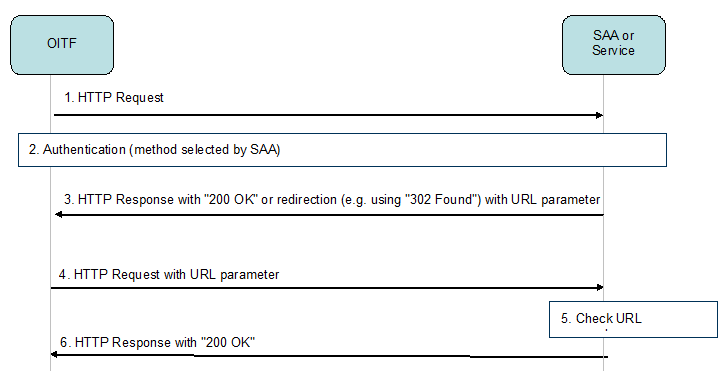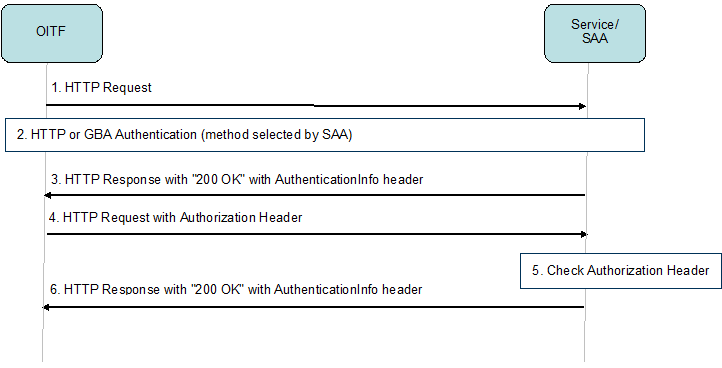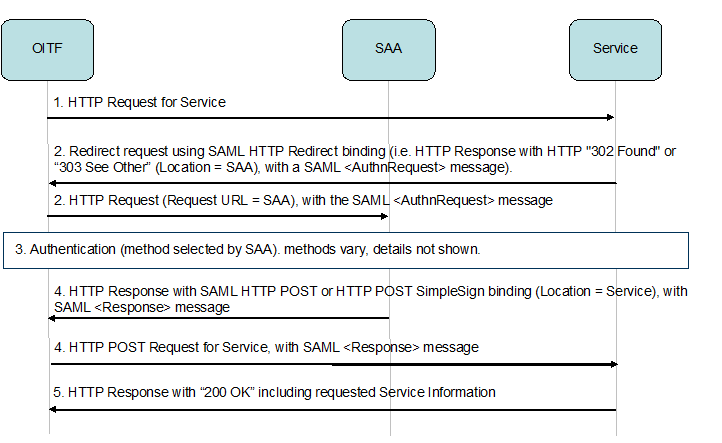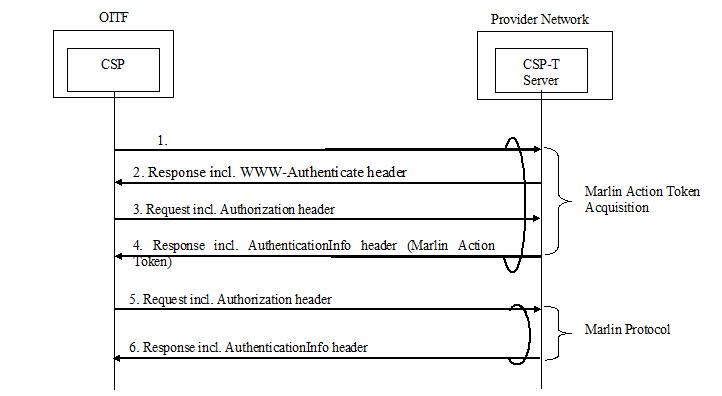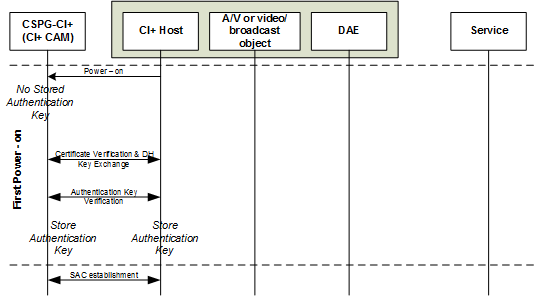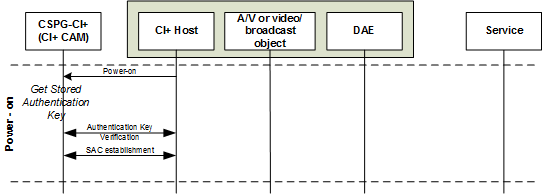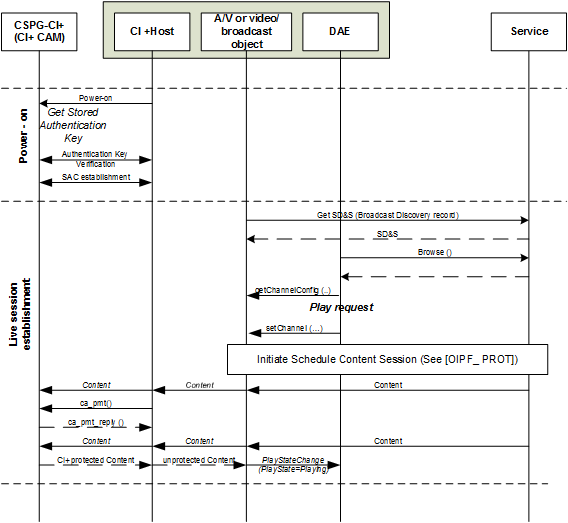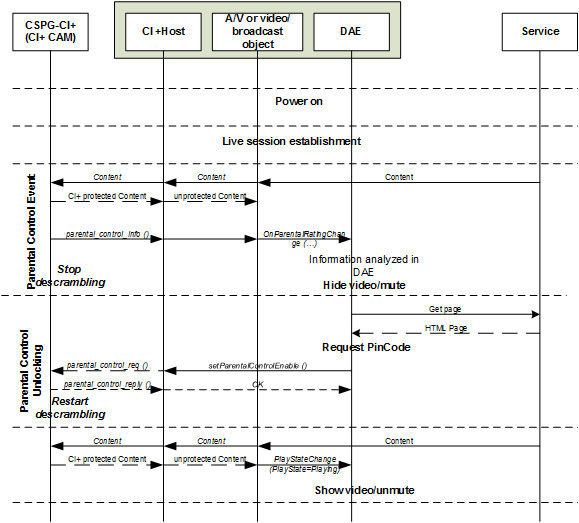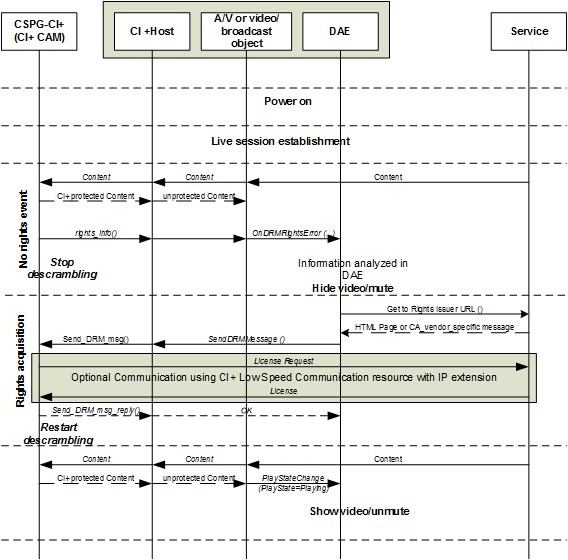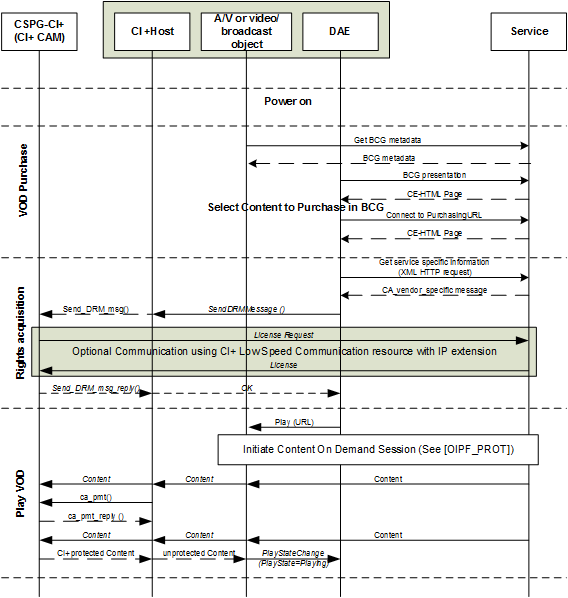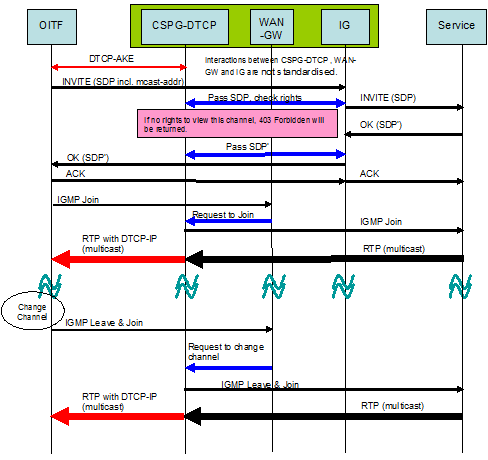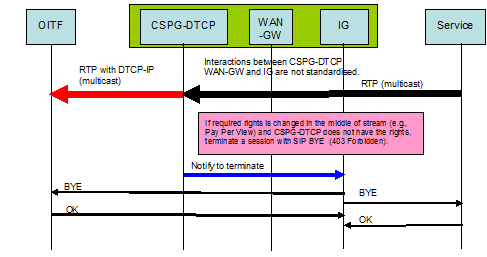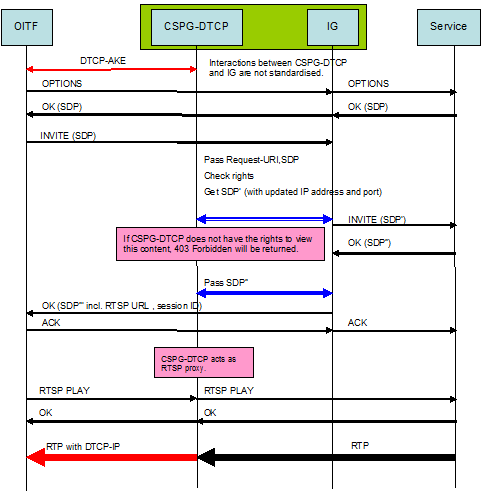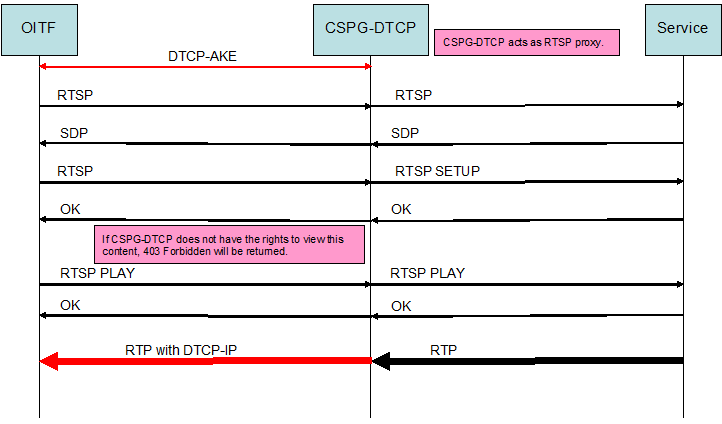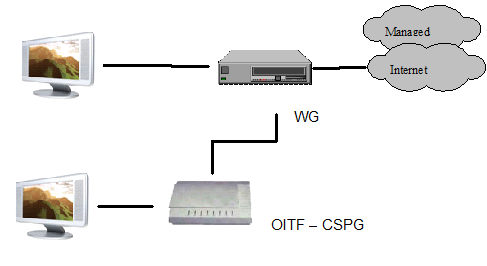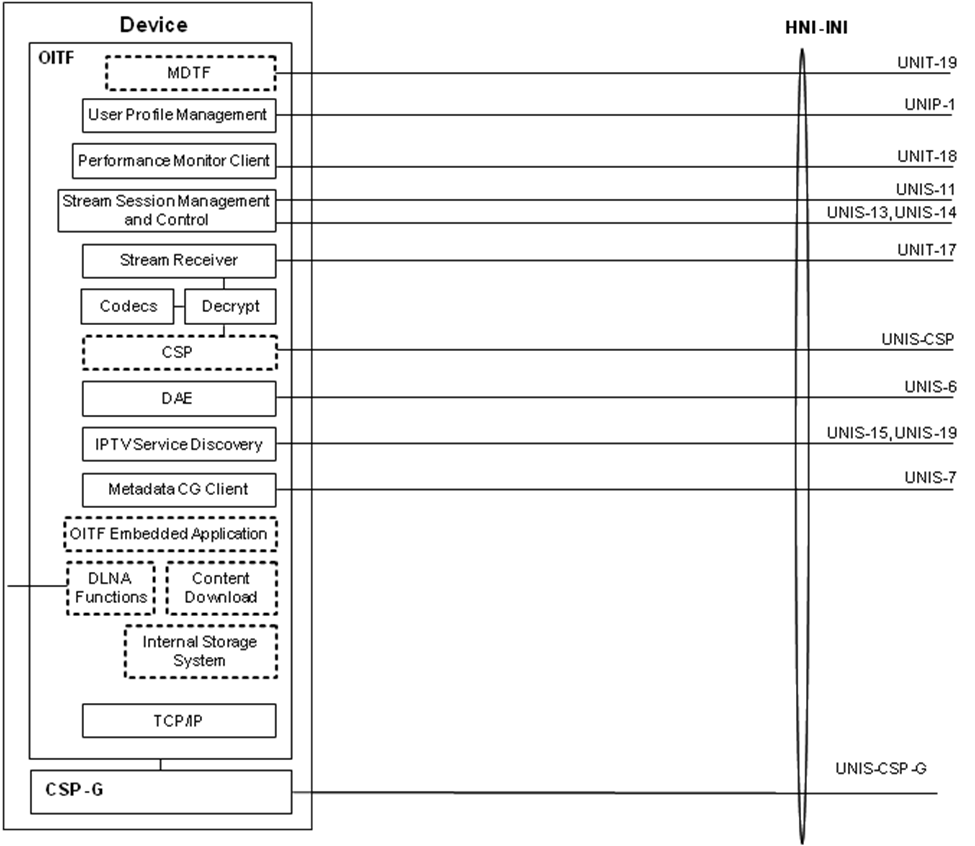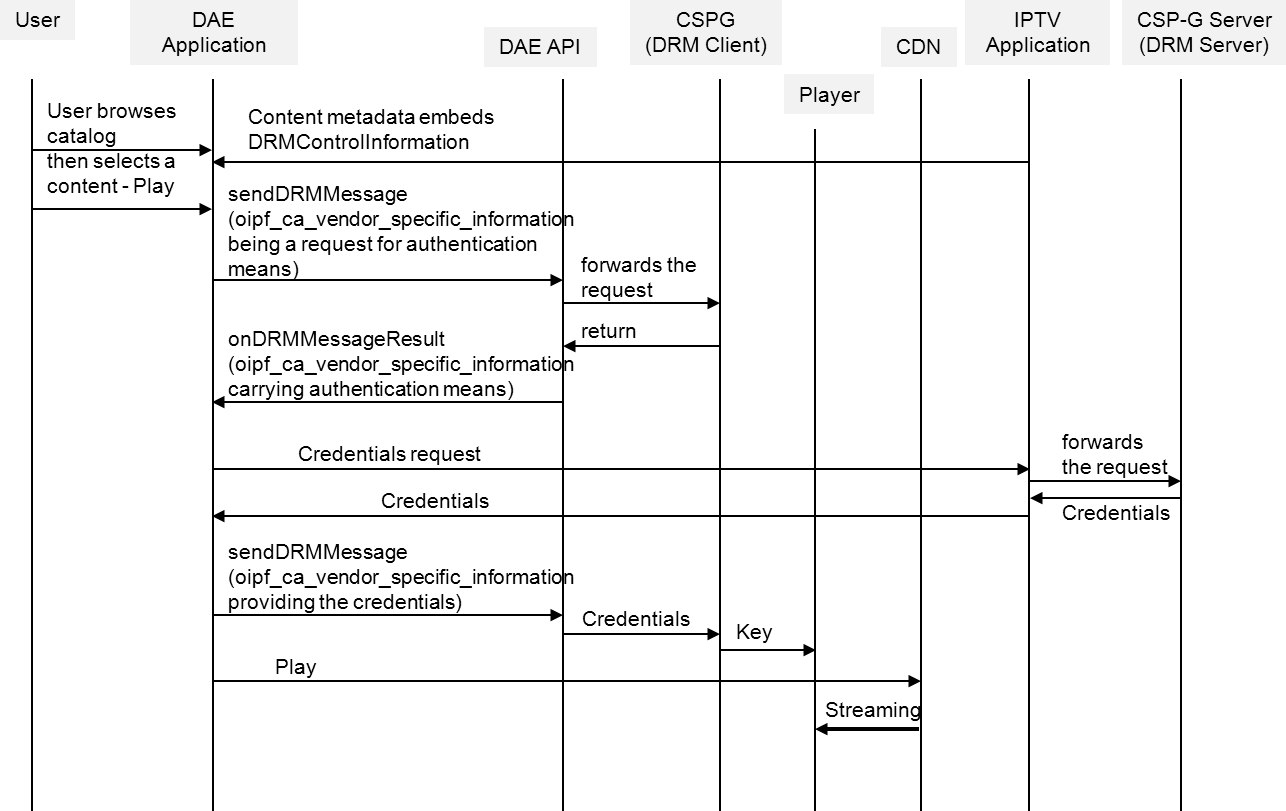Content and Service Protection
This section specifies the Content and Service protection functionality.
It consists of a specification of
Terminal-Centric Approach
This section specifies the functionality for the OIPF Terminal-Centric Approach to Content & Service Protection. In order to do this, this section provides a mapping from all relevant functions and interfaces from [[.OIPF_ARCH2]] to specific sections of Marlin specifications [[!MRL-BNSP]] and [[!MRL-MS3]].
All normative statements in this section and its sub-sections apply only in case the Terminal-Centric Approach is supported by the OITF.
OITFs that support the OIPF Terminal-Centric Approach to Content & Service Protection SHALL be compliant with [[!MRL-BNSP]] and MAY be compliant with [[!MRL-MS3]].
NOTE: The criteria that determine under which circumstances the Terminal-Centric Approach is implemented are out of the scope of the present document.
NOTE: The criteria that determine under which circumstances the support for Marlin metering for content or rights owner settlement is implemented in the OITF are out of the scope of the present document.
Interfaces for CSP and CSP-T Server
This section describes the interfaces related to a CSP and CSP-T Server in the Functional Architecture described in [[.OIPF_ARCH2]].
Scope
The main scope of this section is to describe CSP interfaces (CSP-1, UNIS-CSP-T) and CSP-T Server interfaces (NPI CSPTx, x = 1, 2, 3). CSP-1 is the interface between CSP and OITF Functions. NPI-CSPTx, x = 1, 2, 3, are the interfaces between the CSP-T Server and Providers Network Functions. This section informatively touches upon the Marlin License Evaluation and Content Encryption.
Only the UNIS-CSP-T interface and the interface to DAE in CSP-1 are normative. The other interfaces are informatively described for comprehension.
Figure shows the message flow overview.
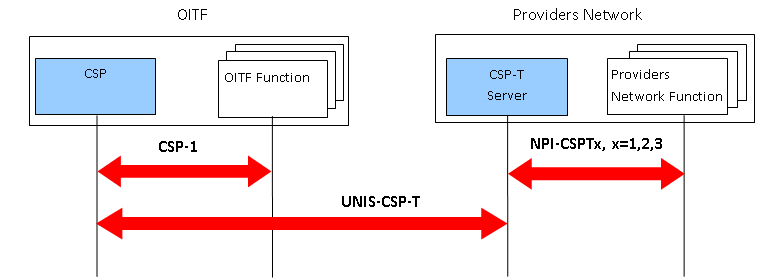
The four functional entities in Figure are described below:
- CSP in this document consists of Marlin Client Function and a part of the Client Function which deals with Marlin elements.
- CSP-T Server in this document consists of Marlin Server Function and a part of the Server Function which deals with Marlin elements.
- OITF Function is the function in the OITF that interacts with the CSP. The OITF Function also interacts with a Providers Network Function to acquire the necessary information for the CSP. How the Providers Network Function is called in this document depends on the process to be performed.
- Providers Network Function is the function in the Providers Network that interacts with the CSP-T Server. How the Providers Network Function is called in this document depends on the process to be performed.
Note that the OITF Function with which the CSP communicates is not limited as described in this document and may vary depending on the implementation of the OITF.
Interface CSP - CSP-T Server (UNIS-CSP-T)
When requested from a native application or from the DAE application to handle a Marlin Action Token or a MIPPVControlMessage, see section , the CSP SHALL act as a Marlin DRM Client and SHALL perform Marlin Protocols as specified in [[!MRL-BNSP]] or [[!MRL-MS3]] as applicable. Furthermore, in the context of [[!MRL-BNSP]], if there are no available rights when trying to use content, the CSP SHALL comply with [[!MRL-BBTS]] and [[!OMARLIN]] and SHALL try to use the URL specified in the content to acquire new rights.
In both cases, the CSP-T Server SHALL comply with Marlin Protocols as specified in [[!MRL-BNSP]].
These protocols are:
- Marlin registration: Node acquisition and Link acquisition.
- Marlin de-registration.
- Marlin License acquisition.
If Marlin Simple Secure Streaming feature is supported, the CSP-T Server MAY comply with MS3 Protocols as specified in [[!MRL-MS3]]
- MS3 Protocol.
Interface CSP - OITF Function (CSP-1)
The DAE DRM Agent API, as defined in [[.OIPF_DAE2]] section 7.6.1, triggers handling of DRM Message, e.g. Marlin Action Token, MIPPVControlMessage or Marlin License. When the sendDRMMessage API is called for a DRMSystemID set to the value defined for Marlin, OITF SHALL forward the DRM Message to the CSP function. The result of calling sendDRMMessage> is notified through the onDRMMessageResult event handler.
Typical DRM events SHALL be triggered by CSP to DAE via A/V Control or video/broadcast object when content cannot be played, recorded or time shifted, due to a lack of rights (no license, invalid license) or parental control locking. These events are defined in [[.OIPF_DAE2]] sections 7.13.6 and 7.14.6. The DRMSystemID of these events SHALL be set to the value defined for Marlin.
A DAE application or native application MAY use DRMControlInformation, defined as an extension to PurchaseItem in [[.OIPF_META2]], present in the BCG and SD&S retrieved by the metadata client. SilentRightsURL, PreviewRightsURL and RightsIssuerURL in DRMControlInformation MAY be used to get updated rights. If the DRMSystemID in DRMControlInformation is set to the value defined for Marlin, the application SHALL forward the DRMPrivateData, if present, to the CSP. A DAE application SHALL use sendDRMMessage, defined in [[.OIPF_DAE2]] section 7.6.1.2, to forward the DRMPrivateData.
All objects defined in [[.OIPF_DAE2]] that are requested to handle a content-access descriptor, defined in [[.OIPF_DAE2]] SHALL check if the content-access descriptor includes DRMControlInformation. These objects or the underlying functions SHALL forward the available DRMPrivateData in the DRMControlInformation to the CSP if the DRMSystemID is set to the value defined for Marlin.
Marlin Protocol Sequences (informative)
Marlin Registration (informative)
Marlin Registration provides functions which enable a Marlin Client Function in CSP to register to a Marlin domain. Marlin Registration consists of Node Acquisition and Link Acquisition.
Node Acquisition (informative)
Node Acquisition provides an Octopus Node Object from a Marlin Server Function in CSP-T Server to a Marlin Client Function in CSP. Note that Node Acquisition is performed prior to the respective Link Acquisition to provide the Octopus Node Objects necessary for the Link Acquisition.
Marlin Node Acquisition Protocol is triggered by a Marlin Action Token for Node Acquisition (hereafter Node Acquisition Action Token) from CSP. The OITF Function acquires the Node Acquisition Action Token and then the OITF Function feeds it to CSP. After CSP acquires corresponding Marlin Configuration Token from CSP-T Server, CSP executes Marlin Node Acquisition Protocol with CSP-T Server. Note that Marlin Node Acquisition Protocol is to provide one Octopus Node Object per its request and response.
The message flow in case of Node Acquisition is shown in Figure .
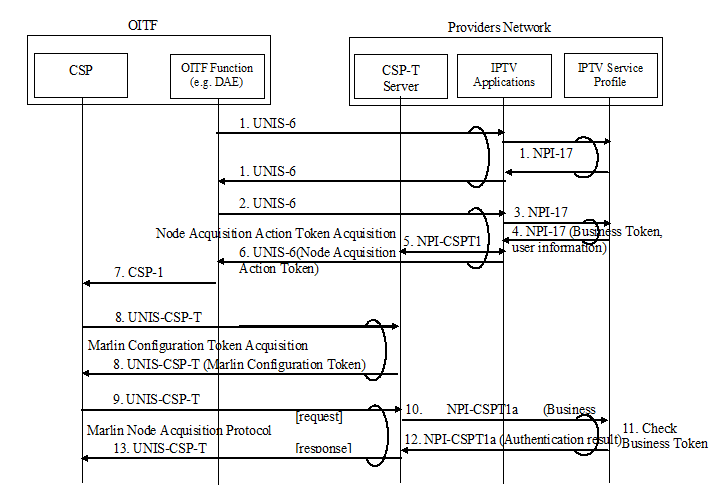
In Node Acquisition Sequence, the following steps are performed:
| 1. | The OITF Function (e.g. DAE) communicates with IPTV Applications and IPTV Service Profile function via UNIS-6 and NPI-17 for Node Acquisition. Note that, although NPI-17 is assumed as the interface for communication between IPTV Applications and IPTV Service Profile, in the case of the managed network model, NPI-2 and NPI-6 may be used instead. |
| 2. | Given the Marlin Action Token URL (e.g. embedded into the webpage obtained in step 1), the OITF Function (e.g. DAE application) sends the request for the Node Acquisition Action Token to the IPTV Applications by UNIS-6. |
| 3. | When receiving the request from the OITF Function, the IPTV Applications sends a request to the IPTV Service Profile function via NPI-17 to get the necessary information to generate the Node Acquisition Action Token. |
| 4. | Receiving the request from IPTV Applications, the IPTV Service Profile function sends Business Token and user information to IPTV Applications. |
| 5. | Given the information from the IPTV Applications, when there is no Octopus Node for the given user information, the CSP-T Server generates Octopus Node and correlates user information with the Octopus Node, so that CSP-T Server can check for the existence of the Octopus Node next time from the user information. Then the CSP-T Server correlates the Business Token with Octopus Node so that the CSP-T Server can provide the corresponding Octopus Node from the Business Token included in the (Marlin Node Acquisition Protocol) request. |
| 6. | IPTV Applications sends the Node Acquisition Action Token to the OITF Function by UNIS-6. |
| 7. | The OITF Function sends the Node Acquisition Action Token to the CSP by CSP-1. |
| 8. | When the CSP does not have a corresponding Marlin Configuration Token, the CSP gets the Marlin Configuration Token from the CSP-T Server by referring to the URL specified in the Node Acquisition Action Token. |
| 9. | Given the Node Acquisition Action Token, the CSP sends a (Marlin Node Acquisition Protocol) request to CSP-T Server by UNIS-CSP-T. |
| 10. | To check the request from the CSP, the CSP-T Server sends the Business Token (and possibly other client data such as client version, model, etc... extracted from the request) to the IPTV Service Profile function. |
| 11. | The IPTV Service Profile function validates the data received from the CSP-T Server. |
| 12. | If validation succeeds, the IPTV Service returns to CSP-T Server the data necessary to fulfil the CSP request. If validation fails, an error is returned to the CSP-T Server. |
| 13. | The CSP-T Server sends a Marlin (Node Acquisition) response message to the CSP. This response includes either the Octopus Node correlated to the Business Token sent in the original CSP request, or an error message as defined in [[!MRL-BNSP]]. |
Link Acquisition (informative)
Link Acquisition provides an Octopus Link from Marlin Server Function in CSP-T Server to Marlin Client Function in CSP.
Note that this sequence assumes that the corresponding Node Acquisition has already been performed between the CSP and CSP-T Server.
Marlin Link Acquisition Protocol is triggered by a Marlin Action Token for Link Acquisition (hereafter Link Acquisition Action Token) from CSP. The OITF Function acquires the Link Acquisition Action Token, and then the OITF Function feeds it to CSP. After CSP acquires corresponding Marlin Configuration Token from CSP-T Server, CSP executes Marlin Link Acquisition Protocol with CSP-T Server.
The message flow in case of Link Acquisition is shown in Figure .
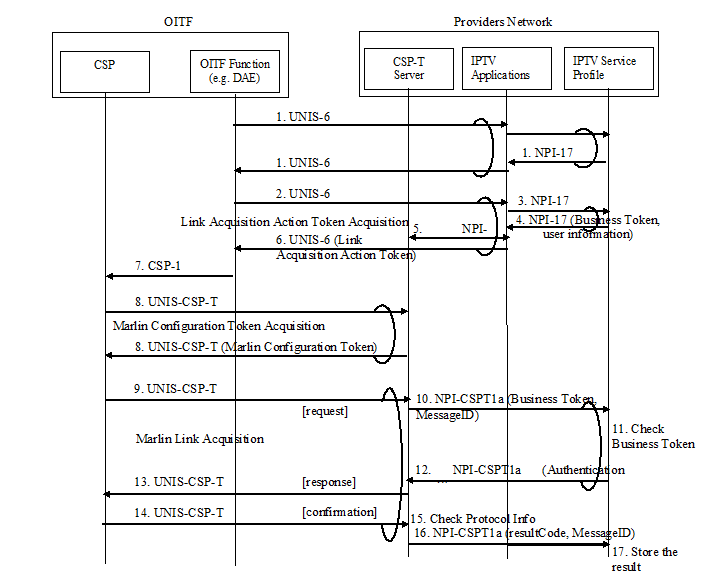
In Link Acquisition Sequence, the following steps are performed:
| 1. | The OITF function (e.g. DAE) communicates with IPTV Applications and IPTV Service Profile function via UNIS-6 and NPI-17 for Link Acquisition. Note that, although NPI-17 is assumed as the interface for communication between IPTV Applications and IPTV Service Profile, in the case of the managed network model, NPI-2 and NPI-6 may be used instead. |
| 2. | Given the Marlin Action Token URL (e.g. embedded into the webpage obtained in step 1), the OITF Function (e.g. DAE application) sends the request for the Link Acquisition Action Token to IPTV Applications by UNIS-6. |
| 3. | When receiving the request from the OITF Function, the IPTV Applications sends a request to the IPTV Service Profile function by NPI-17 to get necessary information to generate the Link Acquisition Action Token, |
| 4. | Receiving the request from IPTV Applications, the IPTV Service Profile function sends Business Token and user information to IPTV Applications. |
| 5. | Given the user information from the IPTV Applications, the CSP-T Server finds the information of Octopus Node which corresponds to “From Node” and “To Node”. Then the CSP-T Server correlates the Business Token with “From Node” and “To Node” so that the CSP-T Server can check the information in (Marlin Link Acquisition Protocol) request. |
| 6. | IPTV Applications sends the Link Acquisition Action Token to the OITF Function by UNIS-6. |
| 7. | Given the Link Acquisition Action Token, the OITF Function sends it to the CSP by CSP-1. |
| 8. | When the CSP does not have a corresponding Marlin Configuration Token, the CSP gets the Marlin Configuration Token from the CSP-T Server by referring to the URL specified in the Link Acquisition Action Token by UNIS-CSP-T. |
| 9. | Given the Link Acquisition Action Token, the CSP sends a (Marlin Link Acquisition Protocol) request to the CSP T Server. |
| 10. | To check the request from the CSP, when the request includes the correct combination of Business Token, “From Node”, and “To Node”, the CSP-T Server sends a Business Token and MessageID to the IPTV Service Profile function by NPI-CSPT1a. The MessageID is a unique id, and the same MessageID is set among request, response, and confirmation, so that IPTV Service Profile function can use the MessageID to correlate request, response, and confirmation. |
| 11. | The IPTV Service Profile function validates the data received from the CSP-T Server. |
| 12. | If validation succeeds, the IPTV Service Profile function returns to CSP-T Server the data necessary to fulfil the CSP request. If validation fails, an error is returned to the CSP-T Server. |
| 13. | The CSP-T Server sends a Marlin (Registration) response message to the CSP. This response includes either the registration agent correlated to the Business Token sent in the original CSP request, or a fault message as defined in [[!MRL-BNSP]]. |
| 14. | The CSP sends a (Marlin Link Acquisition Protocol) Confirmation to the CSP-T Server by UNIS-CSP-T. |
| 15. | The CSP-T Server checks the resultCode (i.e. success or failure for registration in CSP), and then stores the “From Node” and “To Node” information by correlating with the user information so that CSP-T Server can manage Marlin domain information for the user. |
| 16. | The CSP-T Server sends the resultCode and the MessageID to the IPTV Service Profile function by NPI-CSPT1a. |
| 17. | The IPTV Service Profile function stores the resultCode in connection with the user information from step 4. |
Marlin Deregistration (informative)
Marlin Deregistration provides functions which enable Marlin Client Function in CSP to deregister from a Marlin domain.
Note that this sequence assumes that the corresponding Node Acquisition and Link Acquisition have already been performed between the CSP and CSP-T Server.
Marlin Deregistration Protocol is triggered by a Marlin Action Token for Deregistration (hereafter Deregistration Action Token) from CSP. The OITF Function acquires the Deregistration Action Token, and then the OITF Function feeds it to CSP. After CSP acquires corresponding Marlin Configuration Token from CSP-T Server, CSP executes Marlin Deregistration Protocol with CSP-T Server.
The sequence of deregistration messages is shown in Figure .
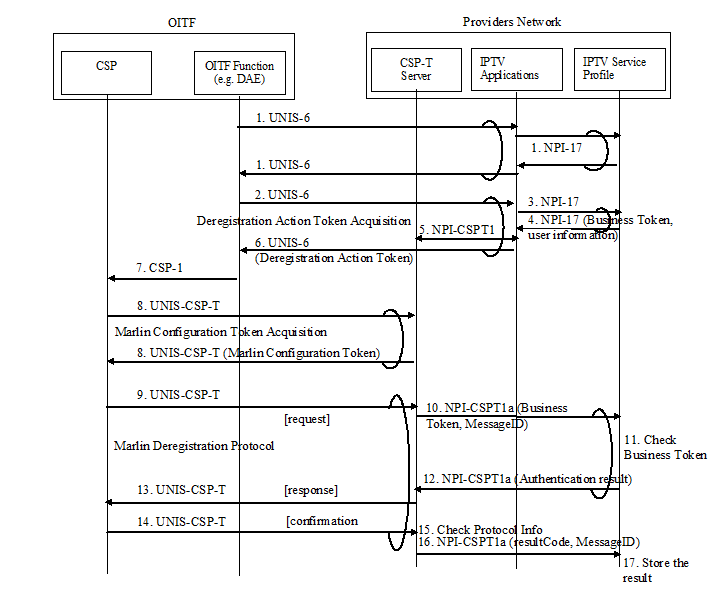
In this deregistration sequence, the following steps are performed:
| 1. | The OITF function (e.g. DAE) communicates with IPTV Applications and IPTV Service Profile function via UNIS-6 and NPI-17 for Marlin Deregistration. Note that, although NPI-17 is assumed as the interface for communication between IPTV Applications and IPTV Service Profile, in the case of the managed network model, NPI-2 and NPI-6 may be used instead. |
| 2. | Given the Marlin Action Token URL (e.g. embedded into the web page obtained in step 1), the OITF Function (e.g. DAE application) sends the request for the Deregistration Action Token to the IPTV Applications by UNIS-6. |
| 3. | When receiving the request from the OITF Function, the IPTV Applications sends a request to the IPTV Service Profile function by NPI-17 to get necessary information to generate the Deregistration Action Token. |
| 4. | Receiving the request from IPTV Applications, the IPTV Service Profile function sends Business Token and user information to IPTV Applications. |
| 5. | Given the user information from the IPTV Applications, the CSP-T Server finds the information of Octopus Node which corresponds to “From Node” and “To Node”. Then the CSP-T Server correlates the Business Token with “From Node” and “To Node” so that the CSP-T Server can check the information in (Marlin Deregistration Protocol) request. |
| 6. | IPTV Applications sends the Deregistration Action Token to the OITF Function by UNIS-6. |
| 7. | Given the Deregistration Action Token, the OITF Function sends it to the CSP by CSP-1. |
| 8. | When the CSP does not have a corresponding Marlin Configuration Token, the CSP gets the Marlin Configuration Token from the CSP-T Server by referring to the URL specified in the Deregistration Action Token. |
| 9. | Given the Deregistration Action Token, the CSP sends a (Marlin Deregistration Protocol) request to the CSP-T Server by UNIS-CSP-T. |
| 10. | To check the request from the CSP by the IPTV Service Profile function, when the request includes the correct combination of Business Token, “From Node”, and “To Node”, the CSP-T Server sends a Business Token and MessageID to the IPTV Service Profile function by NPI-CSPT1a. The MessageID is a unique id and the same MessageID is set among request, response, and confirmation so that IPTV Service Profile function can use the MessageID to correlate request, response, and confirmation. |
| 11. | The IPTV Service Profile function validates the data received from the CSP-T Server. |
| 12. | If validation succeeds, the IPTV Service Profile function returns to CSP-T Server the data necessary to fulfil the CSP request. If validation fails, an error is returned to the CSP-T Server. |
| 13. | The CSP-T Server sends a Marlin (Deregistration) response message to the CSP. This response includes either the deregistration agent correlated to the Business Token sent in the original CSP request, or an error message as defined in [[!MRL-BNSP]]. |
| 14. | The CSP sends a (Marlin Deregistration Protocol) Confirmation to the CSP-T Server by UNIS-CSP-T. |
| 15. | The CSP-T Server checks the resultCode (i.e. success or failure for deregistration in CSP) and Message ID, and then stores the “From Node” and “To Node” information by correlating it with the user information, so that CSP-T Server can manage Marlin domain information for the user. |
| 16. | The CSP-T Server sends the resultCode and the MessageID to the IPTV Service Profile function by NPI-CSPT1a. |
| 17. | The IPTV Service Profile function stores the resultCode in connection with the user information from step 4. |
Marlin License Acquisition (informative)
License Acquisition provides functions which enable Marlin Client Function in CSP to obtain a Marlin License.
Marlin License Acquisition Protocol is triggered by a Marlin Action Token for License Acquisition (hereafter License Acquisition Action Token) from CSP. The OITF Function acquires the License Acquisition Action Token, and then the OITF Function feeds it to the CSP. After CSP acquires corresponding Marlin Configuration Token from CSP-T Server, CSP executes Marlin License Acquisition Protocol with CSP-T Server.
The sequence of license acquisition messages is shown in Figure .
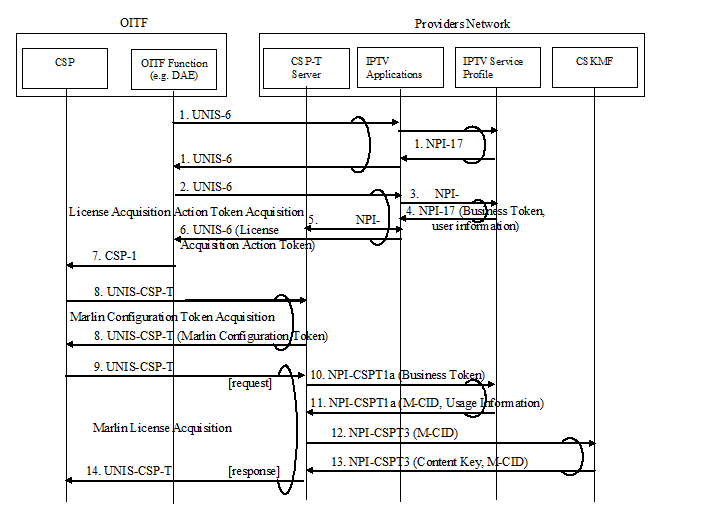
In this sequence, the following steps are performed:
| 1. | The OITF Function (e.g. DAE) communicates with IPTV Applications and IPTV Service Profile function via UNIS-6 and NPI-17 for License Acquisition. Note that, although NPI-17 is assumed as the interface for communication be tween IPTV Applications and IPTV Service Profile, in the case of the managed network model, NPI-2 and NPI-6 may be used instead. |
| 2. | Given the Marlin Action Token URL (e.g. embedded into the webpage obtained in step1), the OITF Function (e.g. DAE application) sends the request for the License Acquisition Action Token to the IPTV Applications by UNIS-6. |
| 3. | When receiving the request from the OITF Function, the IPTV Applications sends a request to the IPTV Service Profile function by NPI-17 to get the information necessary to generate the License Acquisition Action Token. |
| 4. | Receiving the request from IPTV Applications, the IPTV Service Profile function sends Business Token and user information to IPTV Applications. This user information for License Acquisition also indicates “Bound to Node” of the Marlin License. |
| 5. | Given the information from the IPTV Applications, the CSP-T Server correlates the Business Token with the “Bound to Node” so that the CSP-T Server can check the information in a (Marlin License Acquisition Protocol) request. |
| 6. | IPTV Applications sends the License Acquisition Action Token to the OITF Function by UNIS-6. |
| 7. | Given the License Acquisition Action Token, the OITF Function sends it to the CSP by CSP-1. |
| 8. | When the CSP does not have a corresponding Marlin Configuration Token, the CSP obtains the Marlin Configuration Token from the CSP-T Server by referring to the URL specified in the License Acquisition Action Token. |
| 9. | Given the License Acquisition Action Token, the CSP sends a (Marlin License Acquisition Protocol) request to the CSP-T Server by UNIS-CSP-T. |
| 10. | To check the request from the CSP, when the request includes the correct combination of Business Token and “Bound to Node”, the CSP-T Server sends a Business Token to the IPTV Service Profile function by NPI-CSPT1a. |
| 11. | The IPTV Service Profile function validates the data received from the CSP-T Server. If validation fails, an error is returned to the CSP-T Server. If validation succeeds, the IPTV Service Profile function returns to CSP-T Server the data necessary to generate the Marlin License, consisting at a minimum of:
|
| 12. | To get the corresponding Content Key, the CSP-T Server sends the M-CID to the CSKMF by NPI-CSPT3. |
| 13. | When receiving the information, the CSKMF looks for the corresponding Content Key (*) by M-CID, and then sends the Content Key (*) and M-CID to the CSP-T Server by NPI-CSPT3. |
| 14. | The CSP-T Server sends a Marlin (License) response message to the CSP. This response includes either the License correlated to the Business Token sent in the original CSP request, or an error message as defined in [[!MRL-BNSP]]. |
Protected Content Usages
Protected content usages include: playback, recording, time shifting.
Protected content can be played from a native application or from a DAE application using A/V Control or video/broadcast object as defined in [[.OIPF_DAE2]]
Protected content can be time-shifted from a native application or from a DAE application using video/broadcast object as defined in [[.OIPF_DAE2]]
Protected content can be recorded from a native application or from a DAE application video/broadcast object as defined in [[.OIPF_DAE2]]
CSP SHALL control protected content usages as defined in [[!MRL-BNSP]] for License evaluation, [[!MRL-MS3]] for evaluation of Stream Access Statements, and [[!MRL-BBTS]] for ECM control. See also section for an overview.
If usages are not allowed, CSP SHALL block the consumption of program (i.e. stop descrambling) and SHALL generate the appropriate event (no rights, parental control locking) to the calling application, i.e. native application or DAE object. The DAE A/V Control or video/broadcast object SHALL trigger the event to the calling DAE application as specified in .
For MPEG-2 TS, usages SHALL be controlled at each ECM change. For other file formats, usages are controlled only when requesting the usage.
Marlin License Evaluation (informative)
License Evaluation (for (P)DCF [[!OMARLIN]] or Marlin IPMP [[!MRL-FF]]) (informative)
This section describes the informative overview of how Marlin data objects acquired via Marlin Protocols are used for consumption of protected contents, such as rendering or exporting.
Figure shows the message flow of License Evaluation.
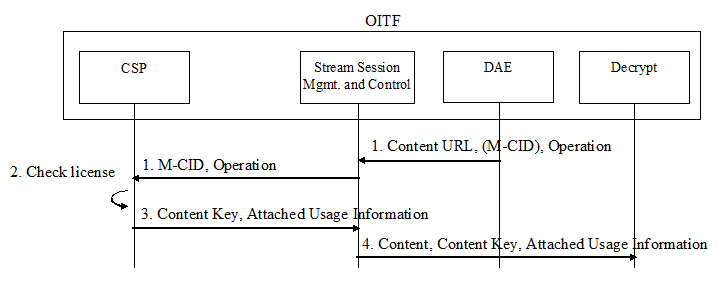
In order to gain access to a protected content, steps below are performed:
| 1. | OITF Function such as DAE triggers the evaluation of a corresponding Marlin License at CSP via Stream Session Management and Control by providing following information:
Note that, although DAE is used as a function to trigger the License Evaluation, this is only for illustrative purposes and other OITF function can be used, such as OITF embedded application depending on the design of the OITF.
|
| 2. | The Marlin Client Function in CSP is required to check the following:
|
| 3. | The Stream Session Management sends the received Content, Content Key and attached usage information, to the Decrypt function. |
License Evaluation (for MPEG-2 Transport Stream) (informative)
Figure shows the message flow of License Evaluation with Scramble Key Decryption.
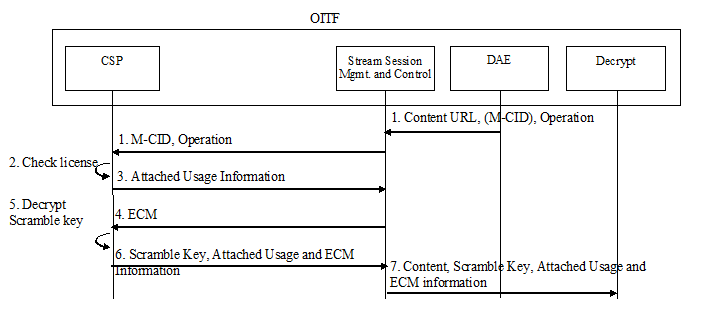
When the content is encrypted by Scramble Key, License Evaluation and Scramble Key Decryption sequence below is followed:
| 1. | OITF Function such as DAE triggers the evaluation of a corresponding Marlin License at CSP via Stream Session Management and Control by providing following information: Note that, although DAE is used as a function to trigger the License Evaluation, this is only for illustrative purposes and can be performed by another OITF function, such as OITF embedded application, depending on the design of the OITF.
|
| 2. | The Marlin Client Function in CSP is required to check the following:
|
| 3. | If the license evaluation succeeds, the CSP returns attached usage information such as Output Control Information (if any) to the Stream Session Management and Control. Otherwise, the CSP responds with an error. |
| 4. | The Stream Session Management and Control provides an ECM to the CSP. The ECM includes a Scramble Key encrypted by a Service or Program key and attached ECM information including the Encryption Algorithm Type, Parental Control Information, recording control Information and Output Control Information. |
| 5. | The CSP checks the ECM on integrity. If this is OK, the CSP decrypts encrypted Scramble Key with the appropriate key, and, based on the combined Output Control Information in the ECM and license, the CSP determines updated Output Control Information as specified in [[!MRL-BBTS]]. |
| 6. | The CSP sends Scramble Key and attached usage and ECM information to the Stream Session Management and Control. |
| 7. | The Stream Session Management sends the received Content, Scramble Key and attached usage and ECM information to the Decrypt. |
Note that the sequence assumes that Stream Session Management and Control is trusted by the CSP and that the Scramble Key, permission to perform the requested operation and attached usage information are transferred over a secure channel.
Content Encryption (informative)
This section contains an informative overview of Content Encryption to clarify sequences related to Content Key, Service or Program key, and Scramble Key in section and .
Figure , Figure and Figure show the message flows of Content Encryption.

When (P)DCF [[!OMARLIN]] or Marlin IPMP [[!MRL-FF]] Content On Demand is encrypted using Content Key, the following steps are performed in Content Encryption sequence:
| 1. | The Content on Demand Management requests for a content specified by M-CID (Marlin Content ID), the Content Key to use. |
| 2. | The Content and Service Key Management function returns the Content Key. |
| 3. | The Content on Demand Encryption Management Function launches encryption of the content in the clear using the M-CID (Marlin Content ID) and Content Key. The protected content is generated. |
| 4. | The Content on Demand Management stores the protected content in the Content Storage. |

When MPEG-2 TS Content on Demand is encrypted using Content Key, the following steps are performed in Content Encryption Sequence:
| 1. | The Content on Demand Management requests for the content item specified by M-CID (Marlin Content ID), the Content Key and ECM attached information, including the Encryption Algorithm, Parental Control Information and Output Control Information, to use. |
| 2. | The Content and Service Key Management function returns the Content Key and ECM attached information. |
| 3. | The Content on Demand Encryption Management Function launches encryption of the content in the clear. Scramble Keys are generated and the content is encrypted using these Scramble Keys. The Scramble Keys are encrypted using the Content Key. ECMs that include Scramble Keys and provided ECM attached information are inserted into the protected content. |
| 4. | The Content on Demand Encryption Management Function stores the protected content in the Content Storage. |

When MPEG-2 TS Scheduled Content is encrypted by Scramble Keys then the Scramble Keys are encrypted by a Service or Program key, the following steps are performed in Content Encryption Sequence:
| 1. | The Content and Service Key Management function sends the M-CID (Marlin Content ID), Service key and possibly a Program key, ECM attached information including Encryption Algorithm, Parental Control Information and Output Control Information to the Multicast Content Delivery Function. |
| 2. | The Multicast Content Delivery Function generates Scramble Keys and then encrypts clear content using these Scramble Keys. Then the Multicast Content Delivery Function encrypts the Scramble Keys using the Service Key or Program Key. When the Program Key is used for encryption of Scramble Keys, the Multicast Content Delivery Function encrypts the Program Key using the Service Key. An ECM that includes the encrypted Scramble Keys and provided ECM attached information is inserted into the protected content. |
| 3. | Protected scheduled content is sent to the Transport Processing Function through UNIT-17M. |
Protected File Formats
The protected file formats supported in the present specification are:
- the MP4 file format as defined in section 4.2 of [[.OIPF_MEDIA2]]
- encrypted according to the OMA (P)DCF file formats, including Marlin specific extensions in an OMA compatible way, as defined in section 4 of [[!OMARLIN]],
- encrypted according to the Marlin IPMP file format as specified in section 2.3 of [[!MRL-FF]],
- encrypted as specified in [[!CENC]],
- the MPEG-2 TS file format as specified in section .
NOTE: this section lists four different protected file formats supported by this specification. The criteria that determine under which circumstances which one or more of these is implemented are out of the scope of the present document.
Protection of MPEG-2 Transport Streams
If the OITF supports the unprotected MPEG-2 TS format, the OITF SHALL support the Marlin protected MPEG-2 TS format, as defined in this section and its sub-sections. Otherwise, the support of the Marlin protected MPEG-2 TS format as defined in this section and its sub-sections is OPTIONAL.
If the OITF supports the unprotected time stamped MPEG-2 TS format, the OITF SHALL support the Marlin protected time stamped MPEG-2 TS format, as defined in this section and its sub-sections. Otherwise, the support of the Marlin protected time stamped MPEG-2 TS format as defined in this section and its sub-sections is OPTIONAL.
Context
Transport of conditional access messages in MPEG-2 TS is defined by DVB. CA_descriptors (Conditional access descriptor) are used to signal the presence of conditional access information in the stream. Conditional access messages are transported in short MPEG-2 TS private section (section_syntax_indicator = 0). Two types of messages are considered:
- ECM messages, which are linked to descrambling, access criteria and Control Words (TEK). These messages are signalled in the CA_descriptor in the PMT. ECM Messages should have a high repetition rate in order to allow quick programme access.
- EMM messages, which are linked to rights management. These messages are signalled in the CA_descriptor in the CAT. These messages' repetition rate should be set at head end level in order to comply with the operator QoS requirements.
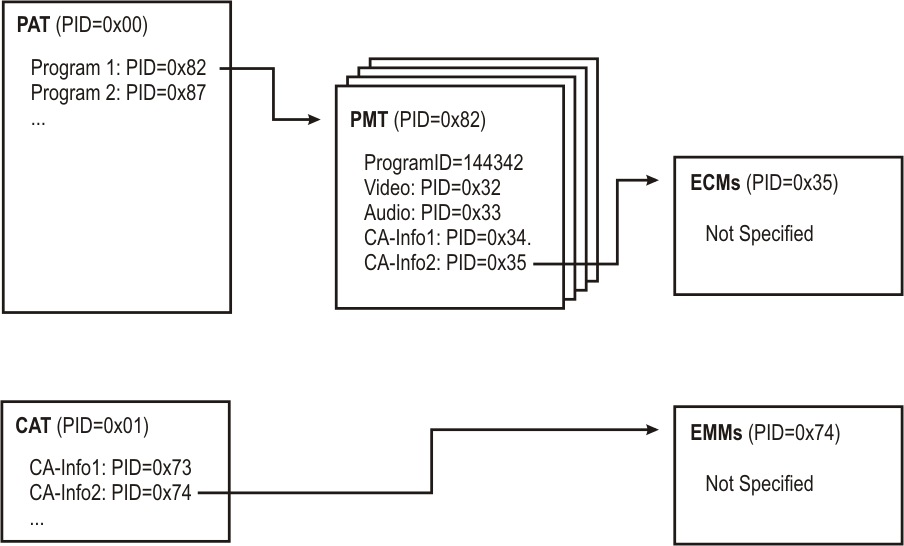
This specification uses Marlin to protect MPEG-2 Transport Streams and time stamped Transport Streams as specified in [[!MRL-BBTS]]. If an OITF supports Marlin protected MPEG-2 TS, the OITF SHALL implement the functions of the DRM Client as specified in [[!MRL-BBTS]]. For Marlin protected MPEG-2 TS the Content Delivery function SHALL deliver Transport Streams or Time-stamped Transport Streams that are formatted as specified in [[!MRL-BBTS]].
If an OITF supports Marlin protected MPEG-2 TS, the OITF SHALL support the Parental_rating access_criteria_descriptor as specified in [[!IEC62455]], the recording control access_criteria_descriptor as specified in section and SHALL support at least the rating_type 0 in these criteria, which maps to the parental rating system in DVB Systems [[!DVBSI]].
For the recording control, refer also to section , the OITF SHALL compare the required operation with the allowed operations (PVR and time shifting) in the recording control criteria and refuse the requested operation to the calling application (native or DAE) if the requested operation is not allowed.
For the parental rating control, the OITF SHALL compare the program's rating from the parental rating access_criteria_descriptor with the current parental rating criterion set in the OITF by the application (either native application or DAE) and SHALL block the consumption of programme (i.e. stop descrambling), if the parental rating system is supported by the OITF and the programme's rating does not meet the parental rating criterion (e.g. rating is at or above a certain threshold, for a rating system that is ordered from lower viewer age to higher viewer age). The OITF SHALL raise an event to the application controlling the playback or other operation, whenever a parental rating is discovered for the A/V content that does not meet the parental rating criterion that is set for the parental system in use, which has lead to blocking of the consumption of the content. The event SHALL provide the programme's rating. In case the application is a native application and if the MPEG-2 TS stream provides a Parental Control URL, as defined in section 0, the native application SHOULD launch the DAE with the Parental Control URL for management of parental control. In case the application is a DAE application, the event is called onParentalRatingChange and is defined in sections 7.13.5 and 7.14.5 of [[.OIPF_DAE2]].
If the OITF does not support the particular parental rating system used in the program, the OITF SHALL raise an event to the application controlling the playback or other operation. The event SHALL provide the programme's rating. In case the application is a DAE application, the event is called onParentalRatingError and is defined in sections 7.13.5 and 7.14.5 of [[.OIPF_DAE2]]. The event MAY be managed via the DAE application (see section 4.5 of [[.OIPF_DAE2]] for more information). In case the application is a native application, the event is managed through an OITF vendor dependent user interface. In both cases, consumption MAY be unblocked by setting a new parental rating threshold. This threshold setting is usually restricted to privileged users, e.g. parents and a successful PIN input by a user may be used to control the parental rating threshold setting. The OITF SHOULD continue monitoring the MPEG-2 TS, taking into account parental rating criteria changes in ECM streams or new settings for the parental rating threshold in the OITF, and SHALL unblock consumption (i.e. re-start descrambling) if the current programme's rating becomes lower than the current parental rating threshold.
When no valid rights are available for the MPEG-2 TS, the OITF SHALL block the consumption of the programme (i.e. stop descrambling) and SHALL raise an event to the application controlling the playback or other operation. In case the application is a DAE application, the event is called onDRMRightsError and is defined in sections 7.13.6 and 7.14.6 of [[.OIPF_DAE2]]. The OITF SHOULD continue monitoring the MPEG-2 TS, taking into account criteria changes in ECM streams or rights changes in OITF and SHALL unblock consumption (i.e. re-starting descrambling) if there are valid rights for the requested operation.
For the avoidance of doubt, the OITF SHALL support the presence of descriptors (for a general description of descriptors, see [[!MPEG2TS]] which are not defined in this specification) but SHALL ignore these descriptors. In particular, to allow DVB-SimulCrypt with other CA systems as defined in [[!DVB-SC]] and gateway-centric approach, the presence of following descriptors SHALL be supported: CA descriptor for other CA systems than Marlin and than CA systems supported in a CSPG, scrambling descriptor [[!DVBSI]], and copyright descriptor [[!MPEG2TS]].
Recording Control Access Criteria
This section defines an access_criteria_descriptor that MAY be present in the IEC62455 ECM as defined in [[!MRL-BBTS]].| recording control information access_criteria_descriptor | Tag | Length (in bits) | Type |
|---|---|---|---|
| recording_control_information_byte | 0x10 | 8 | bslbf |
| Bit # | 7 | 6 | 5 | 4 | 3 | 2 | 1 | 0 |
|---|---|---|---|---|---|---|---|---|
| Assignment | rsvd | rsvd | rsvd | rsvd | rsvd | rsvd | DNTS | DNR |
The DNR (Do Not Record) bit signals that a BBTS is not allowed to be stored for PVR function. The OITF SHALL NOT store for PVR function the TS packets of a BBTS that are received after receipt of a BBTS packet carrying an IEC62455 ECM that includes a recording control access_criteria_descriptor in which the DNR bit is set to 1.
The OITF MAY store for PVR function the TS packets of a BBTS that are received after receipt of a BBTS packet carrying an IEC62455 ECM that does not include a recording control access_criteria_descriptor or does include a recording control access criteria in which the DNR bit is set to 0.
The DNTS (Do Not Time Shift) bit signals that a BBTS is not allowed to be stored for time shifting. The OITF SHALL NOT store for time shifting the TS packets of a BBTS that are received after receipt of a BBTS packet carrying an IEC62455 ECM that includes a recording control access_criteria_descriptor in which the DNTS bit is set to 1.
The OITF MAY store for time shifting the TS packets of a BBTS that are received after receipt of a BBTS packet carrying an IEC62455 ECM that does not include a recording control access_criteria_descriptor or does include a recording control access criteria in which the DNTS bit is set to 0.
The time shifting period SHALL not exceed 90 minutes in case the DNR bit is set to 1 and the DNTS bit is set to 0.
The combination of DNR equals 0 (PVR allowed) and DNTS equals 1 (time shift not allowed) SHOULD NOT be set.
For an overview of the combinations, see Table .
| DNR | DNTS | Description |
|---|---|---|
| 0 | 0 | Time shifting allowed for infinite period; PVR allowed |
| 0 | 1 | SHOULD NOT occur |
| 1 | 0 | Time shift limited to 90 minutes; PVR NOT allowed |
| 1 | 1 | Time shift NOT allowed; PVR NOT allowed |
PMT Table
When creating transport streams that are formatted as specified in [[!MRL-BBTS]], the Content Delivery SHALL include a BBTS CA_descriptor [[!MRL-BBTS]] in each PMT pointing to a stream protected by Marlin and SHALL include the serviceBaseCID, see [[!MRL-BBTS]], into the BBTS CA_descriptor. The socID [[!MRL-BBTS]] used by the Content Delivery SHALL be “marlin” (without the double quotes).
In case DVB-SimulCrypt is used with other CA systems as defined in [[!DVB-SC]] and/or with the gateway-centric approach then the content_key_index field in the IEC62455 ECM as defined in [[!MRL-BBTS]] SHALL match the scrambling_mode of the other CA system. If the cipher_mode field is 0x1 (CBC) then the initial_vector and next_initial_vector fields in the IEC62455 ECM SHALL be set to 0 as specified in [[!ATIS-IDSA]].
CAT Table
When creating transport streams that are formatted as specified in [[!MRL-BBTS]], the Content Delivery function MAY include a BBTS CA_descriptor [[!MRL-BBTS]] in the CAT for streams protected by Marlin, in order to provide Marlin Rights URLs. If several Marlin Rights URL sets are provided for different service operators, the Content Delivery SHALL include several BBTS CA_descriptor and each BBTS CA_descriptor SHALL include a different serviceBaseCID.
The Rights Issuer URL section, defined in [[!MRL-BBTS]] MAY contain a Parental Control URL, as defined in this section. Use of the Parental Control URL is described in section .
The coding of the Parental Control URL parameter in the TLV format is the following:
| Syntax | Mnemonic | No. of bits |
|---|---|---|
| Parental_Control_URL () { | ||
| Parental_Control_URL_tag = 0x05 | uimsbf | 8 |
| Parental_Control_URL_length | uimsbf | 8 |
| For (i=0; i<N; i++){ | ||
| Parental_Control_URL_data_byte | bslbf | 8 |
| } | ||
| } |
| Parental_Control_URL_tag | This specification has defined the value of 0x05 for the Parental Control URL parameter. |
| Parental_Control_URL_length | Specifies the length of the Parental_Control_URL_data_byte in bytes (N). |
| Parental_Control_URL_data_byte | The Parental Control URL for this content. |
NOTE: The syntax of Table and similar tables in subsequent sections follows conventions outlined in [[!MPEG2TS]] (e.g. mnemonics, use of C-language like loop descriptors).
Before accessing the Rights Issuer URL specified in [[!MRL-BBTS]], the OITF, or the DAE application that receives an “onDRMRightsError” event as defined in sections 7.13.6 and 7.14.6 of [[.OIPF_DAE2]], SHALL obtain user consent to access the web page. When a service receives an HTTP request to the Rights Issuer URL, the service SHOULD respond with an HTML page and not with a Marlin Action Token or with a Marlin License. This HTML SHALL comply with CE-HTML. After user interaction via the HTML pages, the service MAY return a Marlin Action Token or Marlin License.
Before accessing the Parental Control URL specified in this section, OITF SHALL obtain user consent to access the web page. When receiving an HTTP request to the Parental Control URL, the service SHOULD respond with an HTML page This HTML SHALL comply with CE-HTML.
System Renewability Messages
In the scope of this specification, DTCP and HDCP System Renewability Messages (SRM) can be transported in a Marlin protected MPEG-2 TS. The signalling and transport of SRM in Marlin protected MPEG-2 TS SHALL comply with [[!DVB-SRM]] specification.
If an OITF supports HDCP output and receives Marlin protected MPEG2-TS format, the OITF SHALL detect the presence of HDCP System Renewability Messages and install them, as defined in [[!HDCP]].
If an OITF supports DTCP output and receives Marlin protected MPEG2-TS format, the OITF SHALL detect the presence of DTCP System Renewability Messages and install them, as defined in [[!DTCP]].
Operation of Marlin Technologies
This section specifies the operation of Marlin technologies to support certain type of use cases.
Status of Marlin License Support
A usage rule which uses status information (such as count) is supported in the Marlin License (e.g. burn usage rule by allowing Export action to a certain target system). When the Marlin License requires status management in the client, the corresponding Marlin License SHOULD also have a 'not after' condition specified in the absolute validity period. The value specified by 'not after' SHOULD be no later than 1 month from the issuance of the Marlin License. For example, when the Marlin License issued on 24 November 2008 00:00 allows 3 times burn to Blu-ray, this Marlin License should only be valid until 24 December 2008 00:00.
Subscription Support
A CSP function that implements this specification MUST support BNS Extended Topology for Subscription Nodes as defined in [[!MRL-BNSP]]. It means that CSP MUST support following Marlin Protocols for Subscription Node which are originally defined as OPTIONAL functions in [[!MRL-BNSP]]:
- Marlin License Acquisition to bind Marlin License to Subscription Node
- Marlin Deregistration from a domain represented by Subscription Node where a corresponding Subscription Link SHALL have the following properties:
- LinkFrom: Personality Node or User Node
- LinkTo: Subscription Node
The CSP MUST signal this support of the BNS Extended Topology by using the mechanism defined in [[!MRL-BNSP]], section 6.2.
DRM Data
DRMSystemID
DRMSystemID, used to signal the type of DRM, is defined in [[.OIPF_META2]]. DRMSystemID is used in metadata structures, defined in [[.OIPF_META2]], in APIs defined in [[.OIPF_DAE2]] and in protocols defined in [[.OIPF_PROT2]]. For Marlin, since the DVB CA_System_ID is assigned as 0x4AF4, the value for the DRMSystemID to signal Marlin SHALL be set to the following value: “urn:dvb:casystemid:19188”. In addition to the DRMSystemID “urn:dvb:casystemid:19188” signaling Marlin, URN “urn:marlin:ms3:1-0” defined in [[!MRL-MS3]] section 1.3.1 MAY be used as a second DRMSystemID to signal that Marlin Simple Secure Streaming feature is supported.
Metadata — DRM Control Information
A DRM Control Information structure to hold DRM dependant control parameters is defined in [[.OIPF_META2]] as an extended element included in Content Access Descriptor, defined in [[.OIPF_DAE2]] and extension of PurchaseItem element of BCG and SD&S metadata, defined in [[.OIPF_META2]]. For Marlin protected content, the element of DRMControlInformation SHALL be mapped as specified in the following table:
If Marlin Simple Secure Streaming feature is supported, in addition to the DRMControlInformation structure given in Table , an second DRM Control Information structure MAY be present with parameters mapped as specified in the following table:
Both MarlinPrivateDataType and HexBinaryPrivateDataType extend DRMPrivateDataType, defined in [[.OIPF_META2]]; and so the element DRMPrivateData can be substituted by either MarlinPrivateData or HexBinaryPrivateData as defined below:
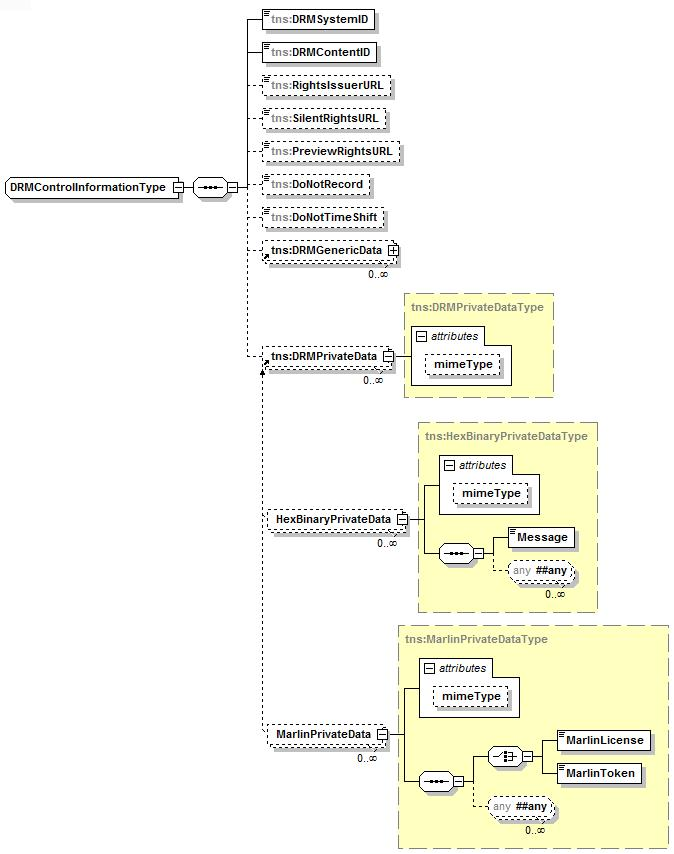
The XML schema for the MarlinPrivateDataType is defined in section .
| Element / Attribute Name | Element / Attribute Description |
|---|---|
| MarlinPrivateData | |
| MarlinLicense | A Base64 encoded XML Document containing an instance of a Marlin License, typically used for channel preview. |
| MarlinToken | A Base64 encoded XML Document containing an instance of a Marlin Token, to be used for triggering Marlin Protocol. |
DAE Marlin Messages
The CSP SHALL support receiving the following messages via the sendDRMMessage API defined in [[.OIPF_DAE2]], section 7.6.1.
- Marlin Action Token, format and mime type defined in [[!MRL-BNSP]].
- MIPPVControlMessage, format and mime type defined in section
- Marlin License, format and mime type defined in [[!MRL-BNSP]].
For these messages, the DRMSystemID SHALL be set to the value defined for the Marlin System ID in section .
MIPPVControlMessage Format
This section describes the usage of MIPPVControlMessage, which is used for pay per view case, and defines the message structure of MIPPVControlMessage. MIPPVControlMessage is used in a pay per view use case where a large number of users try to acquire Marlin License just before a pay per view program begins. To avoid such simultaneous accesses to CSP-T (DRM Server), a service can apply MIPPVControlMessage which includes common Marlin License (i.e. common for OITFs), Marlin Action Token, and Marlin License acquisition timing information. These three data items are used as follows in a typical pay per view case:
- When an OITF Function (e.g. DAE application) receives a MIPPVControlMessage, the OITF Function (e.g. DAE application) passes the MIPPVControlMessage to CSP. CSP uses common Marlin License embedded in MIPPVControlMessage to play a pay per view program until it gets the Marlin License that is valid only for that OITF. Since a common Marlin License is valid for any OITF, the common Marlin License expires during the pay per view program.
- By following the timing information in MIPPVControlMessage, the client executes the Marlin Action Token in MIPPVControlMessage, and then it acquires the Marlin License for the OITF.
- After acquisition of the Marlin License for the OITF, the OITF can play the pay per view program even after the expiration of the common Marlin License.
The MIPPVControlMessage includes Marlin License, which is common among clients, Marlin Action Token, which is used to acquire the unique Marlin License, and timing information, which indicates the timing to initiate Marlin License Acquisition protocols.

The XML schema for the MIPPVControlMessage is defined in section .
Each element has the following semantics:
| Element / Attribute Name | Element / Attribute Description |
|---|---|
| MIPPVControlMessage | |
| MarlinLicense | A Base64 encoded XML Document containing an instance of a Marlin License. |
| MarlinActionToken | A Base64 encoded XML Document containing an instance of a Marlin Action Token. |
| absoluteAcquisitionTiming | License acquisition timing in absolute time |
| relativeAcquisitionTiming | License acquisition timing in relative time from the start of the content |
MIME type of MIPPVControlMessage is defined as follows:
application/vnd.oipf.mippvcontrolmessage+xml
Gateway-Centric Approach
Capabilities
DAE SHALL signal which CA_System_ID values [[!MPEG2TS]] and optionally the type of CSP Gateway are supported in the OITF including those available via Gateway-Centric Approach as defined in section 9 of [[.OIPF_DAE2]] document.
The list of supported CA_System_ID values and optionally the type of CSP Gateway SHALL also be retrieved by the Service Platform provider using one of the following methods:
- The OITF remote management interface [[.OIPF_PROT2]]
- As part of the Service Provider Discovery SUBSCRIBE message [[.OIPF_PROT2]]
CSPG-DAE Interface
When a DAE application uses the DRM Agent API and event, sendDRMMessage and onDRMMessageResult, defined in [[.OIPF_DAE2]] section 7.6.1, to handle a DRM Message (see section 7.6.1 in [[.OIPF_DAE2]]) for a given CA_System_ID that is supported by a CSPG, the OITF SHALL forward these messages to the appropriate function, CSP or CSPG.
When protected content is used (played, time-shifted, recorded) from a DAE application, the OITF SHALL forward events (no rights or parental control locking) from the CSPG to the DAE application via the A/V Control or video/broadcast object. The DRM events onDRMRightsError, onParentalRatingChange and onParentalRatingError are defined in [[.OIPF_DAE2]] sections 7.13.5, 7.13.6, 7.14.5 and 7.14.6. The DRM events (no rights or parental control locking) SHALL include the CA_System_ID information.
CI+ based Gateway
All normative statements in this section and its sub-sections apply only in case the CI+ based Gateway-Centric Approach is supported.
NOTE: The criteria that determine under which circumstances the CI+ based Gateway-Centric Approach is implemented are out of the scope of the present document.
Overview
The CSPG-CI+ is an optional entity handling security for the OITF. It SHALL make any specific content protection solution transparent to the OITF. This is achieved by the use of a standard secure channel between the OITF and the CSPG-CI+. The CSPG-CI+ acts as a bridge between a specific protection solution and one standard secure channel. Once the OITF and the CSPG-CI+ are mutually authenticated, the OITF is seamlessly able to receive any content that was initially secured by the different content protection solutions that the CSPG-CI+ handles. The incoming stream to the CSPG-CI+ is associated with the generic media format label “PF”, as defined in [[.OIPF_MEDIA2]].
The protected content stream is sent from the OITF to the CSPG-CI+ and then sent back to the OITF protected in such a way that only authenticated OITF can gain access to it. Incoming and outgoing streams format are based on MPEG-2 Transport Stream. Protected file formats based on MP4 file format (i.e. OMA (P)DCF and Marlin IPMP) are not supported.
The definition of the interfaces is based on the DVB CI specification ([[!DVB-CI]]) and the CI+ specification ([[!CI+]]).
Figure presents an overview of the functions and interfaces of the CSPG-CI+.
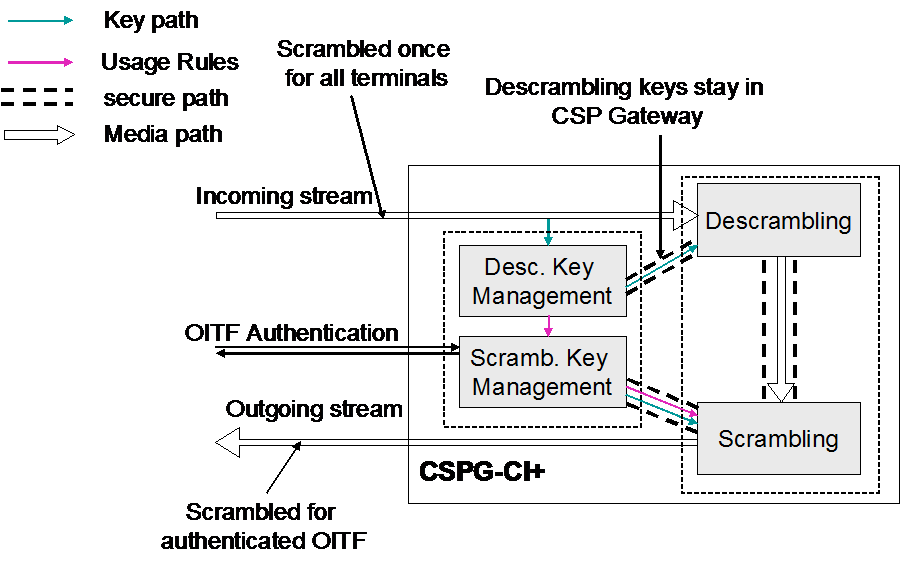
In order to provide seamless behaviour to the end user (e.g. for service selection operation), the incoming stream in Figure must be delivered through the UNIT-17 reference point as for the Terminal-Centric Approach. Figure describes CSPG-CI+ in the home network context and maps interfaces from Figure to Home Network interfaces defined in [[.OIPF_ARCH2]].
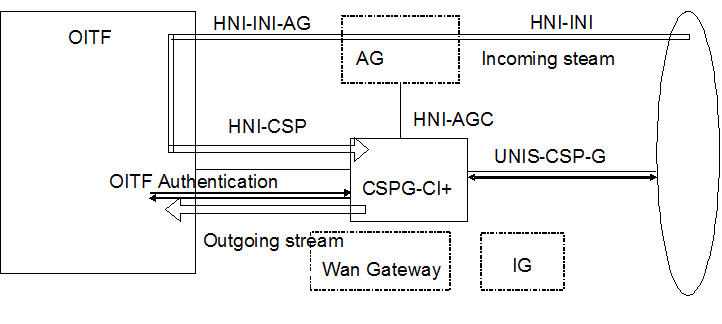
The OITF and CSPG-CI+ SHALL comply with CI+ specifications ([[!CI+]]).
CSPG-CI+ Connectivity
The physical interface is based on a PCMCIA slot as specified by the DVB-CI specification ([[!DVB-CI]]) and the CI+ specification ([[!CI+]]).
CSPG-CI+ Discovery
The CSPG-CI+ discovery SHALL be performed at OITF start-up and CSPG-CI+ initialization. The setup of the session to the [[!CI+]] Specific Application Support (SAS) resource and the connection to the Open IPTV Forum private application are described in section . A successful connection means that a CSPG-CI+ has been discovered.
Residential Network Interfaces
HNI-CSP
HNI-CSP is an interface to exchange control information and media between the CSPG-CI+ and the OITF.
Control Channel
OITF controls the CSPG-CI+ using resources defined in [[!DVB-CI]] as well as resources as defined in section 11 of [[!CI+]].
OITF and CSPG-CI+ SHALL use the SAS resource, defined in [[!CI+]], section 11.4, to handle messages as specified in this section.
The OITF SHALL send a SAS_connect_rqst() APDU [[!CI+]] to the CSPG-CI+ with the specific Open IPTV Forum private_host_application_ID defined in Table . The CSPG-CI+ SHALL acknowledge the connection by sending back a SAS_connect_cnf() APDU [[!CI+]]. The highest private_host_application_ID value known by the host shall be tried first. If the SAS_session_status returned by the SAS_connect_cnf() APDU is not 0x00 (“Connection established”) then a lower value shall be tried and so on until success.
| private_host_application_ID | Value (64bits) |
|---|---|
| OIPF_APPLICATION_ID for version up to V2.2 included | 0x0108113101190000 |
| OIPF_APPLICATION_ID for version above V2.2 | 0x0108113101190001 |
| Syntax | No. of Bits | Mnemonic |
|---|---|---|
| SAS_async_msg() { | ||
| SAS_async_msg_tag | 24 | uimsbf |
| length_field() | ||
| message_nb | 8 | uimsbf |
| message_length | 16 | uimsbf |
| for (i=0; i<message_length; i++) { | ||
| message_byte | 8 | uimsbf |
| } | ||
| } |
Specific messages
The OITF and CSPG-CI+ SHALL support the messages listed in Table . For each of the messages the message_byte payload takes the generic syntax given in Table . The message data may be broken into a number of records containing the same or different types of data identified by the datatype_id.
| Syntax | No. of Bits | Mnemonic |
|---|---|---|
| message_byte() { | ||
| command_id | 8 | uimsbf |
| ca_system_id | 16 | uimsbf |
| transaction_id | 32 | uimsbf |
| send_datatype_nbr | 8 | uimsbf |
| for (i=0; i<send_datatype_nbr; i++) { | ||
| datatype_id | 8 | uimsbf |
| datatype_length | 16 | uimsbf |
| data_type() | 8 * datatype_length | bslbf |
| } | ||
| } |
| Message | command_id value (hexadecimal) | Direction | |
|---|---|---|---|
| OITF | CSPG-CI+ | ||
| send_msg | 0x01 | → | |
| reply_msg | 0x02 | ← | |
| parental_control_info | 0x03 | ← | |
| rights_info | 0x04 | ← | |
| system_info | 0x05 | ← | |
| can_play_content_req | 0x06 | → | |
| can_play_content_reply | 0x07 | ← | |
| can_record_content_req | 0x08 | → | |
| can_record_content_reply | 0x09 | ← | |
| (reserved) | 0x0A-0x7F | ||
| (user defined) | 0x80-0xFF | ||
| Data type | datatype_id value (hexadecimal) |
|---|---|
| oipf_ca_vendor_specific_information | 0x01 |
| oipf_country_code | 0x02 |
| oipf_parental_control_url | 0x03 |
| oipf_rating_type | 0x04 |
| oipf_rating_value | 0x05 |
| oipf_rights_issuer_url | 0x06 |
| oipf_access_status | 0x07 |
| oipf_status | 0x08 |
| oipf_drm_private_data | 0x09 |
| oipf_can_play_status | 0x0A |
| oipf_can_record_status | 0x0B |
| (reserved) | 0x0C-0x7F |
| (user defined) | 0x80-0xFF |
Mapping of messages to DAE API or Events
The OITF SHALL map the specific messages listed in Table to DAE API or Events as described in Table :
| Message | DAE API or Event |
|---|---|
| send_msg | sendDRMMessage |
| reply_msg | onDRMMessageResult |
| parental_control_info | onParentalRatingChange, onParentalRatingError |
| rights_info | onDRMRightsError |
| system_info | onDRMSystemMessage |
| can_play_content_req | canPlayContent |
| can_play_content_reply | canPlayContent |
| can_record_content_req | canRecordContent |
| can_record_content_reply | canRecordContent |
The DRMSystemID attribute in DAE API or Events are mapped to the ca_system_id field in the SAS_async_msg APDU. The ca_system_id field is filled by extracting the numeric value from the DRMSystemID string, such that "urn:dvb:casystemid:" is removed and the remaining number is converted from a string to a 16 bit integer. The DRMSystemId is build by prefixing the 16 bit integer converted to a decimal number string with "urn:dvb:casystemid:" as described in [[.OIPF_META2]].
Private data are array of bytes encoded for DAE API or Events attributes in a string using a hexadecimal representation, as defined for xs:hexBinary type used in XML schemas. In CI+ SAS_async_msg fields, the private data is encoded in bytes.
Precise mapping of DAE API or Events and attributes are described in the following sections.
send_msg
A native application or DAE application SHOULD use the send_msg message to provide DRM specific messages to the CSPG-CI+.
When requested by either a native or DAE application, the OITF SHALL send the send_msg message to the CSPG-CI+ to exchange DRM messages.
Examples of usage are:
- Service Provider handles the purchase of content at the server side and then uses the send_msg message via a DAE application to ask the CSPG-CI+ to retrieve the associated license.
- Service provider sends the send_msg message via a DAE application to the CSPG-CI+ to force the CSPG-CI+ to purchase a specific program.
The data types for the send_msg message are listed in the following table.
| Syntax | Occurrence number |
|---|---|
| oipf_ca_vendor_specific_information | 1 |
| oipf_ca_vendor_specific_information | Vendor specific information. The maximum length is 65000 bytes. |
When a DAE application calls the sendDRMMessage API with msgType set to the MIME type "application/vnd.oipf.cspg hexbinary" and a DRMSystemId set to a ca system id supported by the CSPG-CI+, the OITF SHALL send a send_msg message to the CSPG-CI+.
The prototype of the sendDRMMessage API defined in [[.OIPF_DAE2]] is recalled here:
String sendDRMMessage( String msgType, String msg, String DRMSystemID )
The OITF SHALL map the attributes of the called DAE API as follows:
- the DRMSystemId attribute is mapped to the ca_system_id field as described in section .
- the private data in msg attribute encoded in a string using a hexadecimal representation, as defined for xs:hexBinary type used in XML schemas is decoded to bytes before passing it to send_msg message in the oipf_ca_vendor_specific_information field as described in section .
parental_control_info
The CSPG-CI+ SHALL send a parental_control_info message to advise the OITF whenever the selected program's rating changes. If the new rating does not meet the parental rating criterion (e.g. rating is at or above a certain threshold, for a rating system that is ordered from lower viewer age to higher viewer age), the program is not descrambled anymore . If the new rating meets the parental rating criterion (e.g. rating is under a certain threshold, for a rating system that is ordered from lower viewer age to higher viewer age), the program is descrambled again.
The data types for the parental_control_info message are listed in the following table.
| Syntax | Occurrence number |
|---|---|
| oipf_access_status | 1 |
| oipf_rating_type | 1 |
| oipf_rating_value | 1 |
| oipf_country_code | 0..n |
| oipf_parental_control_url | 0..1 |
| oipf_access_status | If equal to 0, the program is no longer being descrambled, access conditions to the program are no longer being met. A oipf_parental_control_url may be provided. If equal to 1, the program is descrambled again. |
| oipf_rating_type | Rating_type as defined in the parental_rating access_criteria_descriptor in [[!IEC62455]]. |
| oipf_rating_value | 1-byte rating_value as defined in the parental_rating access_criteria_descriptor in [[!IEC62455]]. |
| oipf_country_code | 2-byte optional country_codes as defined in the parental_rating access_criteria_descriptor in [[!IEC62455]]. |
| oipf_parental_control_url | Optional url for connecting to the service provider, for unlocking the parental control. |
The OITF SHALL support at least the parental rating system identified by the oipf_rating_type 0, which maps to the parental rating system in DVB Systems [[!DVBSI]].
If an oipf_parental_control_url is provided and the event is raised to a native application, the native application SHOULD launch the DAE with the oipf_parental_control_url that might allow to unlock parental control in the CSPG-CI+.
When the parental_control_info message is received and a DAE application is launched, the OITF SHALL issue the relevant event to the DAE application:
- onParentalRatingChange event, if the parental rating system specified by the oipf_rating_type is supported by the OITF.
- onParentalRatingError event, if the parental rating system specified by the oipf_rating_type is not supported by the OITF.
The prototype of the onParentalRatingChange and onParentalRatingError events defined in [[.OIPF_DAE2]] are recalled here:
function onParentalRatingChange( String contentID, ParentalRatingCollection ratings, String DRMSystemID, Boolean blocked ) function onParentalRatingError( String contentID, ParentalRatingCollection ratings, String DRMSystemID )
The OITF SHALL set the attributes of the issued event as follows:
- the contentId attribute is set to null or undefined.
- the ratings attribute (ParentalRatingCollection object) is filled out with a single ParentalRating object. This ParentalRating object is initialized as follows:
- If the oipf_rating_type is supported by the OITF, the oipf_rating_type field is mapped into the scheme property of the ParentalRating object. If the oipf_rating_type is not supported by the OITF, the scheme is set to null or undefined.
- The oipf_rating_value field is mapped into the value property of the ParentalRating object. If the oipf_rating_type is supported by the OITF, the name property of the ParentalRating object is filled with the string representation of the parental rating value. If the oipf_rating_type is not supported by the OITF, the name property is set to null or undefined.
- The oipf_country_code field is mapped into the region property of the ParentalRating object
- the DRMSystemID attribute is mapped to the ca_system_id field as defined in section .
- The blocked attribute is mapped to oipf_access_status as follows
oipf_access_status field Description Blocked attribute Description 0 program not descrambled True Content blocked 1 Program descrambled False Content not blocked
A DAE application SHOULD use a proprietary method using sendDRMMessage to unlock parental control.
If the program is no longer being descrambled (oipf_access_status=0), the native or DAE application SHOULD not stop playing the program, as the program may become descrambled again later (access criteria change, parental unlocking etc).
rights_info
The CSPG-CI+ SHALL send a rights_info message to advise the OITF that access conditions or rights changed and that the CSPG-CI+ is no longer able or is able again to descramble all requested elementary streams. Once this message is received and if a DAE application is launched, the OIPF SHALL send the relevant event onDRMRightsError, as defined in [[.OIPF_DAE2]] sections 7.13.6 and 7.14.6, to the DAE application.
If the program is descrambled again, the OITF SHOULD display the program again. If the program is no longer being descrambled, the OITF MAY decide to stop the program and SHOULD use the oipf_rights_issuer_url, which may provide for the CSPG-CI+ information to let it retrieve missing rights.
The data types for the rights_info message are listed in the following table.
| Syntax | Occurrence number |
|---|---|
| oipf_access_status | 1 |
| oipf_rights_issuer_url | 0..1 |
| oipf_access_status | If equal to 0, the program is no longer being descrambled, access conditions to the program are no longer being met. A oipf_rights_issuer_url may be provided. If equal to 1, the program is descrambled again. |
| oipf_rights_issuer_url | Optional url for connecting to the service provider. |
The prototype of the onDRMRightsError event defined in [[.OIPF_DAE2]] is recalled here:
function onDRMRightsError( Integer errorState, String contentID, String DRMSystemID, String rightsIssuerURL )
When the right_info message is received and a DAE application is launched, the OITF SHALL issue the onDRMRightsError event to the DAE application.
The OITF SHALL set the attributes of the issued event as follows:
- The errorState attribute is mapped to oipf_access_status field as follows:
oipf_access_status field Description errorState attribute Description 0 program not descrambled 0 No license 1 Program descrambled 2 Valid license - The contentId attribute is set to null or undefined.
- The DRMSystemID attribute is mapped to the ca_system_id field as defined in section .
- The rightsIssuerURL is mapped to oipf_rights_issuer_url if this field is present. If the oipf_rights_issuer_url is not present, rightIssuerURL is set to null or undefined.
If the program is no longer being descrambled (oipf_access_status=0), the native or DAE application SHOULD not stop playing the program, as the program may become descrambled again later (access criteria change, rights update etc).
system_info
The CSPG-CI+ SHALL send a system_info message to advise the OITF of any DRM related event, e.g. the removal of a smartcard. Once this message is received and if a DAE application is launched, the OIPF SHALL send the relevant event onDRMSystemMessage, as defined in [[.OIPF_DAE2]] section 7.6.1, to the DAE application.
The data types for the system_info message are listed in the following table.
| Syntax | Occurrence number |
|---|---|
| oipf_ca_vendor_specific_information | 1 |
| oipf_ca_vendor_specific_information | Vendor specific information. The maximum length is 65000 bytes. |
When the system_info message is received and if a DAE application is launched, the OITF SHALL issue the onDRMSystemMessage event to the DAE application.
The prototype of the onDRMSystemMessage event defined in [[.OIPF_DAE2]] is recalled here:
function onDRMSystemMessage( String DRMSystemID, String msg )
The OITF SHALL set the attributes of the issued event as follows:
can_play_content_req and can_play_content_reply
Note: The following messages are only supported for a private_host_application_ID greater or equal to 0x0108113101190001.
When requested by either a native or DAE application, the OITF SHALL send the can_play_content_req message to the CSPG-CI+ to check the local availability of a valid license for playing a content protected by a DRM integrated in the CSPG-CI+.
The data types for the can_play_content_req message are listed in the following table.
| Syntax | Occurrence number |
|---|---|
| oipf_drm_private_data | 1 |
| oipf_drm_private_data | DRM proprietary private data. The maximum length is 16384 bytes. |
When a DAE application calls the canPlayContent API with a DRMSystemId set to a ca system id supported by the CSPG-CI+, the OITF SHALL send a can_play_content_req message to the CSPG-CI+ and wait for a can_play_content_reply message from the CSPG-CI+.
The data types for the can_play_content_reply message are listed in the following table.
| Syntax | Occurrence number |
|---|---|
| oipf_can_play_status | 1 |
| oipf_can_play_status | If equal to 1, the CSPG_CI+ has a valid license available that may allow playing the content associated to the DRM metadata. If equal to 0, the CSPG-CI+ has no license available. |
When the CSPG-CI+ receives a can_play_content_req message, then it shall check whether it owns a valid license for playing the protected content which oipf_drm_private_data relates to and reply to the OITF with a can_play_content_reply message with an oipf_can_play_status that indicates whether or not the CSPG-CI+ has a valid license available.
The prototype of the canPlayContent API defined in [[.OIPF_DAE2]] is recalled here:
Boolean canPlayContent( String DRMPrivateData, String DRMSystemID )
The OITF SHALL map the attributes of the called DAE API as follows:
can_record_content_req and can_record_content_reply
Note: The following messages are only supported for a private_host_application_ID greater or equal to 0x0108113101190001.
When requested by either a native or DAE application, the OITF SHALL send the can_record_content_req message to the CSPG-CI+ to check the local availability of a valid license for recording a content protected by a DRM integrated in the CSPG-CI+.
The data types for the can_record_content_req message are listed in the following table.
| Syntax | Occurrence number |
|---|---|
| oipf_drm_private_data | 1 |
| oipf_drm_private_data | DRM proprietary private data. The maximum length is 16384 bytes. |
When a DAE application calls the canRecordContent API with a DRMSystemId set to a ca system id supported by the CSPG-CI+, the OITF SHALL send a can_record_content_req message to the CSPG-CI+ and wait for a can_record_content_reply message from the CSPG-CI+.
The data types for the can_record_content_reply message are listed in the following table.
| Syntax | Occurrence number |
|---|---|
| oipf_can_record_status | 1 |
| oipf_can_record_status | If equal to 1, the CSPG_CI+ has a valid license available that may allow recording the content associated to the DRM metadata. If equal to 0, the CSPG-CI+ has no license available. |
When the CSPG-CI+ receives a can_record_content_req message, then it shall check whether it owns a valid license for recording the protected content which oipf_drm_private_data relates to and reply to the OITF with a can_record_content_reply message with an oipf_can_record_status that indicates whether or not the CSPG-CI+ has a valid license available.
The prototype of the canRecordContent API defined in [[.OIPF_DAE2]] is recalled here:
Boolean canRecordContent( String DRMPrivateData, String DRMSystemID )
The OITF SHALL map the attributes of the called DAE API as follows:
Media Channel
Media are exchanged as defined in the [[!CI+]] specification.
For streamed content, in either Scheduled Content case or Content on Demand case, the transmission of the protected content from the OITF to the CSPG-CI+ is performed by using MPEG-2 Transport Stream.
For downloaded content, the OITF SHALL stream the content to the CSPG-CI+ at consumption time.
UNIS-CSP-G
HNI-AGC
In case there is an Application Gateway, control flow is handled through the OITF, via HNI-INI-AG and HNI-CSP control channel. The HNI-AGC reference point introduced in [[.OIPF_ARCH2]] is not used.
Provider Network Interfaces
The scrambler on network side SHALL have an interface with the CSP-G Server functional entity so that ECMs can be provided during content encryption. This interface is not described in the present specification.
Protected Streaming and File Formats
The CSPG-CI+ supports the MPEG-2 Transport Stream format. The CSPG-CI+ supports the MPEG-2 Transport Stream format. The generically protected incoming transport stream to the CSPG-CI+ is associated with the media format label “PF”, as defined in [[.OIPF_MEDIA2]].
The CSPG-CI+ does not support the time stamped MPEG-2 Transport Stream format.
However, in the case content is received by the OITF under a time stamped MPEG-2 Transport Stream format and if the OITF supports the unprotected time stamped MPEG-2 TS format,
- the OITF MAY first use the timestamps provided through the 4 additional bytes of each time stamped MPEG-2 TS (as defined in [[.OIPF_MEDIA2]]) packet to eliminate network jitter and restore the original packet arrival times before sending the content to the CSPG-CI+,
- and the OITF SHALL remove the 4 additional bytes from each time stamped MPEG-2 TS (as defined in [[.OIPF_MEDIA2]]) packet before sending the content to the CSPG-CI+.
If the OITF does not support the unprotected time stamped MPEG-2 TS format, the support of the above two operations is OPTIONAL.
Protection of MPEG-2 Transport Streams
MPEG-2 Transport Stream can be streamed or downloaded. Based on the CA_descriptor found in the PMT table, the OITF knows if it can handle the stream or if it has to send it to the CSPG-CI+.
If the CA_descriptor found in the PMT is a Marlin CA_descriptor (with CA_system_ID value assigned for Marlin) and the Terminal-Centric Approach is supported by the OITF, then the OITF SHALL manage the content with CSP function described in section .
If the CA_descriptor found in the PMT is a Marlin CA_descriptor and the Terminal-Centric Approach is not supported by the OITF, then the OITF SHALL ignore it unless Marlin is supported by a CSPG-CI+ in which case the OITF SHALL provide the protected content to the relevant CSPG-CI+.
If the CA_descriptor found in the PMT is not a Marlin CA_descriptor, then the OITF SHALL compare the CA_system_ID value with the CA_system_ID supported by the CSPG-CI+. A CSPG-CI+ might support more than one CA_system_ID. If a CA_system_ID value matches then the OITF SHALL provide the protected content to the CSPG-CI+. In case several CSPG-CI+ gateways are connected to the OITF, the OITF SHALL provide the protected content to only one CSPG-CI+.
If there are several CA_descriptors in the PMT, i.e. referring to different content protection systems (Marlin and/or those offered by the CSPG-CI+ gateways), and if the user is already granted with a valid right or license through one of these content protection systems, the OITF SHALL select the corresponding content protection system as a priority.
NOTE: If simulcrypting with the Terminal-Centric solution is desired, the algorithm used for content encryption in the Gateway-Centric Approach has to be the same as for the Terminal-Centric Approach.
The scrambling algorithm SHALL be signalled in the PMT at program loop level by the scrambling_descriptor specified in [[!DVBSI]]. Within the scrambling_descriptor, the algorithm is specified by the scrambling_mode field. The following scrambling_modes are referenced by the Open IPTV Forum:
| scrambling_mode | Description |
|---|---|
| 0x01 | DVB-CSA1 |
| 0x02 | DVB-CSA2 |
| 0x70 | AES 128-bit key using the Cipher Block Chaining (CBC) encryption mode with the IV setting and the residual termination block process as specified in [[!ATIS-IDSA]]. |
Downloaded Content Usage
Downloaded content SHALL be stored locally as it is received by the OITF not going through the CSPG-CI+.
Downloaded content SHALL be provided to the CSPG-CI+ at consumption time only. Consequently, any conversion from e.g. time stamped MPEG-2 TS as defined in [[.OIPF_MEDIA2]] to TS is performed at consumption time as well.
Personal Video Recorder
PVR functionality is supported by using URI (Usage Rule Information) as defined in [[!CI+]], section 5.7.
When the OITF is asked to store content, it SHALL send the content to CSPG CI+. The content is returned from CSPG-CI+ and recorded in accordance with the URI associated with the content.
Time Shifting
Time Shifting functionality is supported by using URI (Usage Rule Information) as defined in [[!CI+]], section 5.7.
When the OITF is asked to time shift content, it SHALL store the content returned from CSPG-CI+ before rendering in accordance with the URI associated to the content.
CI+ Specification Usage
Module Deployment
As the network offered in the Open IPTV Forum context is a bi-directional communication channel, the optional Registered Service Mode (RSM) in the CI+ specification [[!CI+]] is recommended in the CSP specification. The RSM SHOULD be supported by CSPG-CI+.
Host Service Shunning
As no DVB-CI backward compatibility is needed, the OITF SHALL make the CSPG-CI+ operate in a CI+ mode [[!CI+]] only (thus preventing CSPG-CI+ gateways from operating with the unencrypted DVB-CI link). CI+ Protected Service Signalling defined in section 10.1 of [[!CI+]] is not used.
DRM Data
DRMSystemID
DRMSystemID, used to signal the type of DRM, is defined in [[.OIPF_META2]]. DRMSystemID is used in metadata structures in APIs defined in [[.OIPF_DAE2]] and in protocols defined in [[.OIPF_PROT2]]. For CSPG-CI+, the DVB CA_System_ID in DRMSystemID SHALL be the one of the specific content protection solution in the CSPG-CI+.
Metadata — DRM Control Information
A DRM Control Information structure to hold DRM dependant control parameters is defined in [[.OIPF_META2]] as an extended element included in Content Access Descriptor, defined in [[.OIPF_DAE2]] and extension of PurchaseItem element of BCG and SD&S metadata, defined in [[.OIPF_META2]].
For specifically protected content, the element of DRMControlInformation SHALL be mapped as specified in the following table:
Both MarlinPrivateDataType and HexBinaryPrivateDataType extend DRMPrivateDataType which is defined in [[.OIPF_META2]], and so the element DRMPrivateData can be substituted by either MarlinPrivateData or HexBinaryPrivateData as described in DRMControlInformation outline in Figure .
The XML schema for HexBinaryPrivateData is defined in section .
| Element / Attribute Name | Element / Attribute Mapping for CSPG-CI+ |
|---|---|
| HexBinaryPrivateData | |
| Message | A hexadecimal encoded sequence of bytes to be sent to the CSPG-CI+ using send_msg message |
DTCP-IP based Gateway
All normative statements in this section and its sub-sections apply only in case the DTCP-IP based Gateway-Centric Approach is supported. NOTE: The criteria that determine under which circumstances the DTCP-IP based Gateway-Centric Approach is implemented are out of the scope of the present document.
Overview
The CSP Gateway based on DTCP-IP (CSPG-DTCP) is an optional entity handling security for the OITF. The CSPG DTCP resides in the residential network and makes any specific content protection solution transparent. This is achieved by transforming a service proprietary content protection format into standard protection formats which are sent by a secure channel. OITF and CSPG-DTCP mutually authenticate each other, and CSPG-DTCP transfers content and its usage rule information to OITF in a secure manner. The definition of this interface is based on DTCP ([[!DTCP]]) and DTCP over IP ([[!DTCP-IP]]).
- Browsing interactions are executed between DAE and IPTV Applications.
- OITF discovers CSPG-DTCP in a home IP network by the use of the UPnP device discovery protocol as specified in [[.OIPF_PROT2]], section 10.1.1.3.
- For managed network relying on IMS, CSPG-DTCP is co-located with IG to share session management information between IG and CSPG-DTCP. If it supports multicast IPTV services, it is co-located with WAN Gateway to intercept IGMP messages from OITF.
- CSPG-DTCP acts as an HTTP proxy or RTSP proxy. CSPG-DTCP identifies the location of the content through an input URL from OITF.
- CSPG-DTCP transforms service specific content protection formats and usage information format to DTCP over IP content protection format and usage information format respectively.

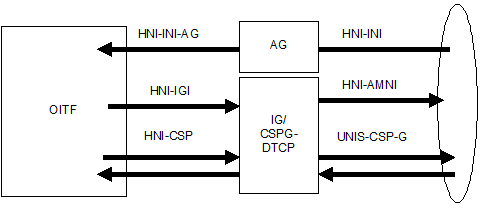
NOTE: HNI-AGC and HNI-AGI are not involved for the CSPG-DTCP.
CSPG-DTCP Connectivity
The CSPG-DTCP is an IP connected device, and uses the same physical interface used for other IP devices such as IG, AG or home router.
HNI-CSP
The main functionalities of the HNI-CSP are to provide:
- CSPG-DTCP discovery as described in [[.OIPF_PROT2]]),
- Content access through CSPG-DTCP,
- DTCP AKE, content stream and usage rule transmission
Content Access Through CSPG-DTCP
When an OITF determines, e.g. by inspecting the information in the DRMType element, see [[.OIPF_META2]], of the content guide, content access descriptor or SD&S, that the content is protected by a service specific protection scheme, it SHALL access the content through the CSPG-DTCP, which acts as an HTTP proxy or RTSP proxy. CSPG-DTCP receives content and SHALL transform the protection scheme to DTCP-IP. When OITF receives error code of 403 from CSPG-DTCP, the error code is interpreted as DRM rights error. Then a DAE application accesses the error handling web page as an action of onDRMRightsError event defined in [[.OIPF_DAE2]], or a native application accesses the RightsIssuerURL described in BCG or SD&S metadata [[.OIPF_META2]].
Refer to Annex E for examples of session setup sequences with a CSPG-DTCP.
For HTTP streaming and download, the OITF SHALL send HTTP GET request through the HTTP proxy in CSPG-DTCP. Note that other HTTP transactions SHALL not use the HTTP proxy in CSPG-DTCP.
DTCP AKE, Content Streaming and Usage Rule Transmission
DTCP AKE (Authentication and Key Exchange), DTCP content stream and DTCP usage rule are defined in [[!DTCP]] and [[!DTCP-IP]]. The usage rule is provided to the OITF from the CSPG-DTCP considering appropriate mapping, which depends on the service provider's business models. Content type of HTTP response/request SHALL be set to DTCP application media type as defined by [[!DTCP-IP]].
UNIS-CSP-G
This interface is out of scope because of applied service specific protection scheme.
Protected Streaming and File Formats
The CSPG-DTCP supports either or both of the following formats protected by DTCP-IP encryption on HNI-CSP. The supported format depends on the CA system supported by the CSPG-DTCP. Media format on UNIS-CSP-G is out of scope of this specification.
- MPEG-2 TS and/or time stamped MPEG-2 TS
- MP4 File Format
If the OITF supports the unprotected MPEG-2 TS, the OITF SHALL support the DTCP-IP protected MPEG-2 TS format, as defined in this section and its sub-sections. Otherwise, the support of the DTCP-IP protected MPEG-2 TS format as defined in this section and its sub-sections is OPTIONAL.
If the OITF supports the unprotected time stamped MPEG-2 TS format, the OITF SHALL support the DTCP-IP protected time stamped MPEG-2 TS format, as defined in this section and its sub-sections. Otherwise, the support of the DTCP-IP protected time stamped MPEG-2 TS format as defined in this section and its sub-sections is OPTIONAL.
If the OITF supports the unprotected MP4 file format, the OITF SHALL support the DTCP-IP protected MP4 file format, as defined in this section and its sub-sections. Otherwise, the support of the DTCP-IP protected MP4 file format as defined in this section and its sub-sections is OPTIONAL.
Protection of MPEG-2 Transport Streams
An MPEG-2 Transport Stream can be streamed or downloaded through CSPG-DTCP. CSPG-DTCP SHALL transmit the content in the DTCP PCP format. The DTCP PCP format encapsulates the MPEG-2 Transport Stream format, which is defined by [[.OIPF_MEDIA2]]. For the avoidance of doubt, Transport Stream level scrambling or PES level scrambling are not used. Both transport_scrambling_control bits and pes_scrambling control bits SHALL be set “00”.
For content with parental rating control, CSPG-DTCP SHALL transmit MPEG-2 Transport Stream with CA descriptor and KSM table as specified in ---- and 4.2.4.5.1.2. The access_criteria_descriptor carries information for parental rating control.
If the OITF supports the DTCP-IP based Gateway-Centric Approach, the OITF SHALL support the parental rating access_criteria_descriptor, specified in [[!IEC62455]], and SHALL support at least the rating_type 0 within these criteria, which maps to the parental rating system in DVB Systems [[!DVBSI]]. Other descriptors in the key stream message SHOULD be ignored.
For the parental rating control, the OITF SHALL compare the program's rating from the parental rating access_criteria_descriptor with the current parental rating criterion set in the OITF by the application (either native application or DAE) and SHALL block the consumption of the programme if the parental rating system is supported by the OITF and the programme's rating does not meet the parental rating criterion (e.g. rating is at or above a certain threshold, for a rating system that is ordered from lower viewer age to higher viewer age). The OITF SHALL raise an event to the application controlling the playback or other operation whenever a parental rating for the A/V content is detected that does not meet the parental rating criterion that is set for the parental system in use, and which has lead to blocking of the consumption of the content. The event SHALL provide the programme's rating. In case the application is a DAE application, the event is called onParentalRatingChange and is defined in sections 7.13.6 and 7.14.6 of [[.OIPF_DAE2]].
If the OITF does not support the particular parental rating system used in the programme, the OITF SHALL raise an event to the application controlling the playback or other operation. The event SHALL provide the programme's rating. In case the application is a DAE application, the event is called onParentalRatingError and is defined in sections 7.13.6 and 7.14.6 of [[.OIPF_DAE2]]. The event MAY be managed via the DAE application (see section 4.5 of [[.OIPF_DAE2]] for more information). In case the application is a native application, the event is managed through an OITF vendor dependent user interface. In both cases, consumption MAY be unblocked by setting a new parental rating threshold, the setting of which is usually restricted to privileged users, e.g. parents. A successful PIN input by a user MAY be used to control the parental rating threshold setting. The OITF SHOULD continue monitoring the MPEG-2 TS, taking into account parental rating criteria changes in ECM streams or new settings for the parental rating threshold in the OITF, and SHALL unblock consumption if the current program's rating becomes lower than the current parental rating threshold.
CA_descriptor
Content with parental rating control SHALL include the CA descriptor in PMT with the following restrictions:
| Syntax | No. of bits | Mnemonic | Value |
|---|---|---|---|
| CA_descriptor() { | |||
| descriptor_tag | 8 | uimsbf | 9 |
| descriptor_length | 8 | uimsbf | |
| CA_system_ID | 16 | uimsbf | 0x0007 |
| MPEG2_Reserved | 3 | bslbf | |
| CA_PID | 13 | uimsbf | |
| for (i=0; i<N; i++) { | |||
| private_data_byte | 8 | uimsbf | |
| } | |||
| } |
| descriptor_tag | MPEG has defined the tag value of 9 for the CA-descriptor. |
| descriptor_length | The length of the descriptor. |
| CA_system_ID | 0x0007 |
| CA_PID | The PID on which the KSM table can be found |
| MPEG2_reserved | Bits reserved by [[!MPEG2TS]]. |
| private_data_byte | Not used and SHALL be ignored. |
Key Stream Message and KSM Table
Content with parental rating control SHALL include Key Stream Message in KSM table ([[!IEC62455]], [[!DVB-CA]]).
Key Stream Message is defined in section 7.2 of [[!IEC62455]] and the following usage restrictions SHALL be applied:
- access_criteria_flag is set to KSM_FLAG_TRUE for the content with parental rating control.
- traffic protection protocol is set to KSM_ALGO_MPEG2_TS_CRYPT.
- traffic_authentication_flag is set to KSM_FLAG_FALSE (traffic authentication is not used).
- next_traffic_key_flag is set to KSM_FLAG_FALSE.
- timestamp_flag is set to KSM_FLAG_FALSE.
- programme_flag is set to KSM_FLAG_FALSE.
- service_flag is set to KSM_FLAG_FALSE.
- content_key_index MAY be set to any value defined in [[!IEC62455]]. The OITF SHALL ignore this field.
- odd_even_flag MAY be set to any value defined in [[!IEC62455]]. The OITF SHALL ignore this field.
- cipher_mode MAY be set to any value defined in [[!IEC62455]]. The OITF SHALL ignore this field.
- encrypted_traffic_key_material_length is set to 0.
- traffic_key_lifetime is set to 0.
For content with parental rating control, the access_criteria_descriptor loop in the Key Stream Message SHALL have at least one parental_rating access_criteria_descriptor. The OITF SHALL ignore other access_criteria_descriptors.
Protection of MP4 File Format
MP4 file format can be downloaded through CSPG-DTCP. CSPG-DTCP SHALL transmit the content in DTCP PCP format which encapsulates MP4 file format which is defined by [[.OIPF_MEDIA2]].
Downloaded Content Usage
For downloaded content, content SHALL be transformed to DTCP-IP protection by CSPG-DTCP when content is being downloaded. Content SHALL be stored and played back by OITF in a manner compliant to DTCP compliance rules [[!DTCP-AA]].
PVR Usage
For PVR usage for scheduled content service, content SHALL be transformed to DTCP-IP protection by CSPG-DTCP when content is being streamed or multicast. Content SHALL be stored and played back by OITF in a manner compliant to DTCP compliance rules [[!DTCP-AA]].
